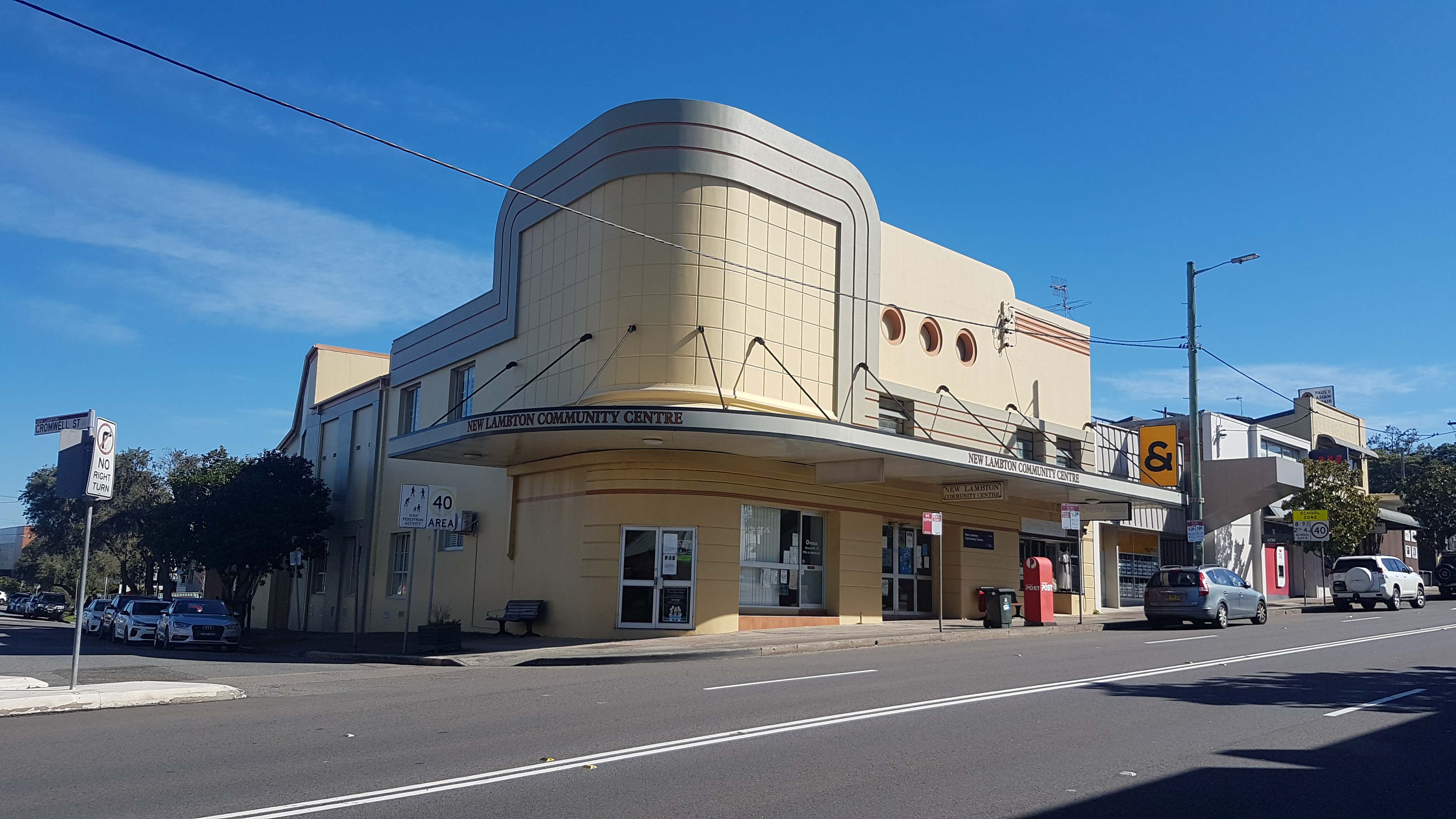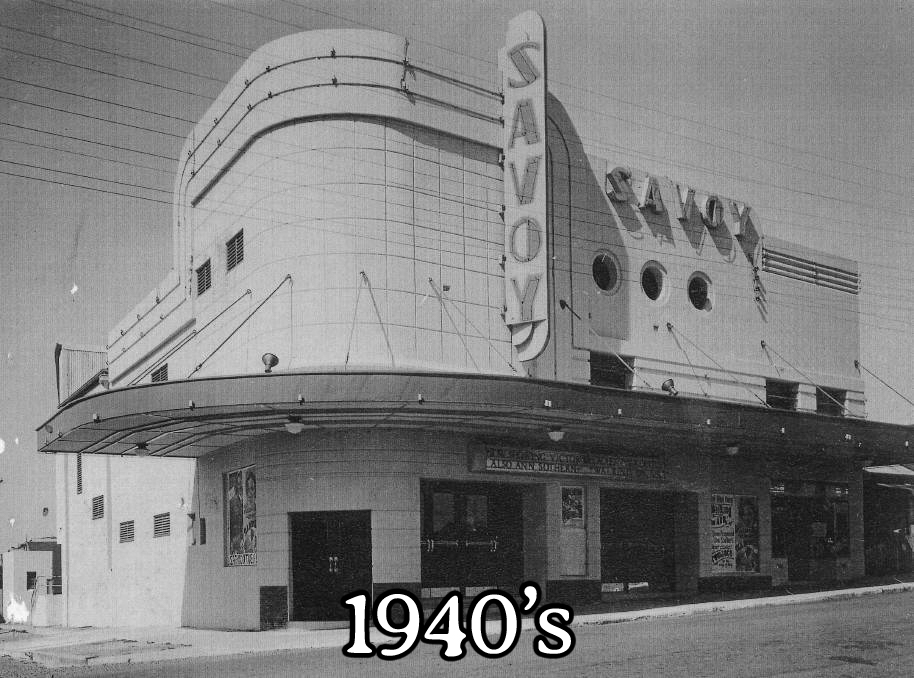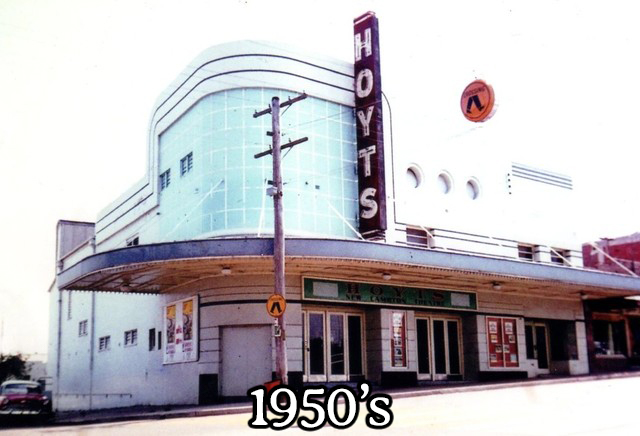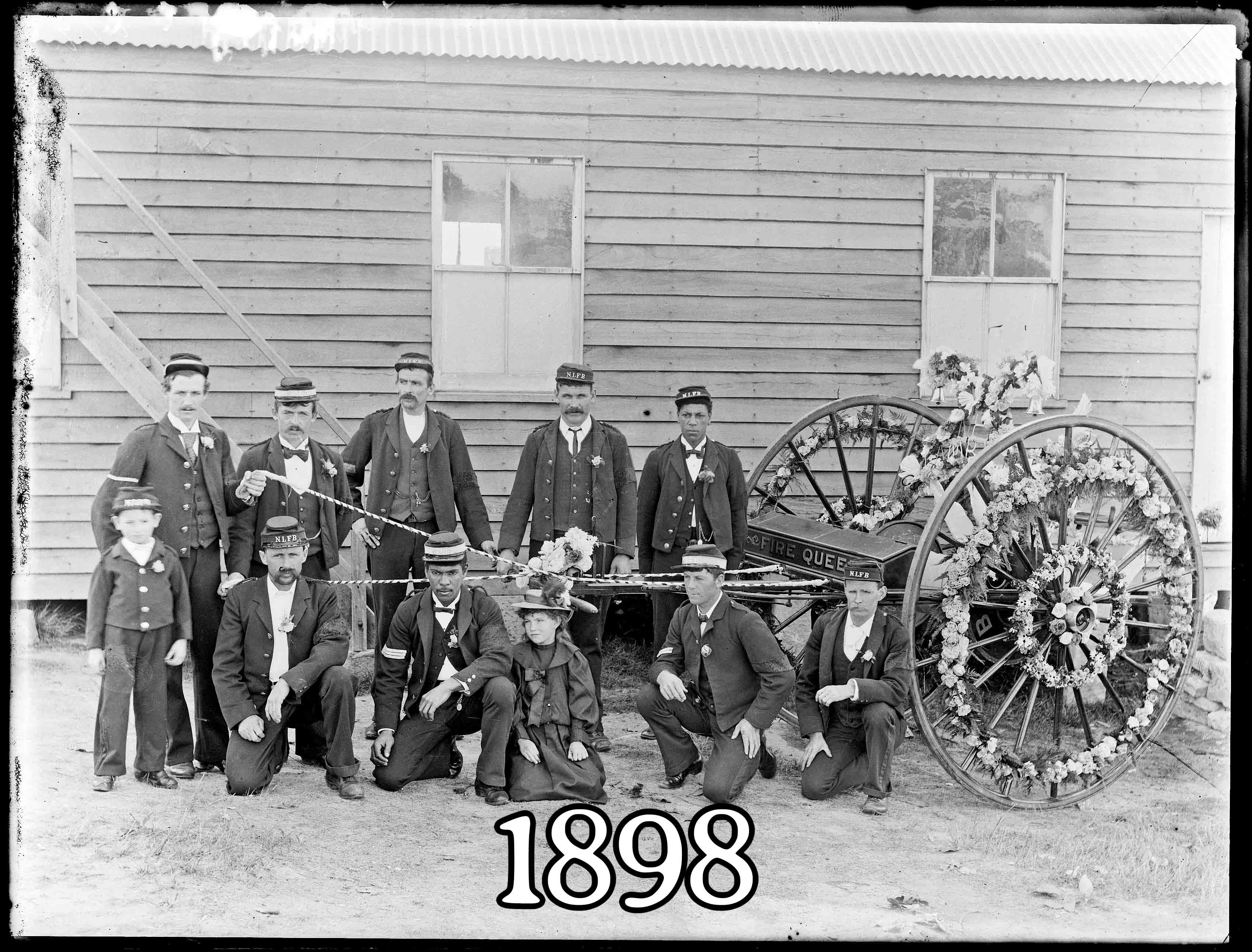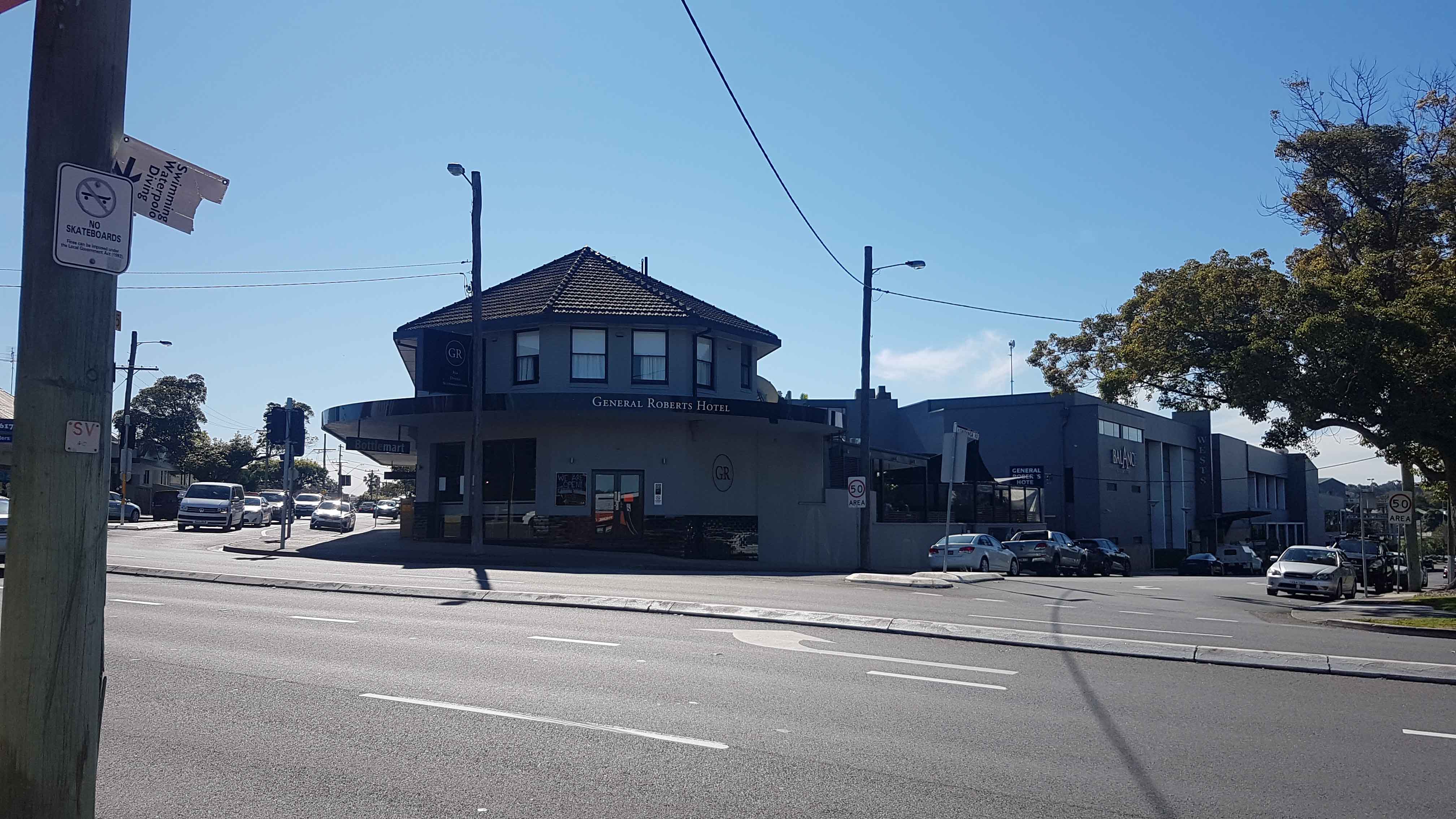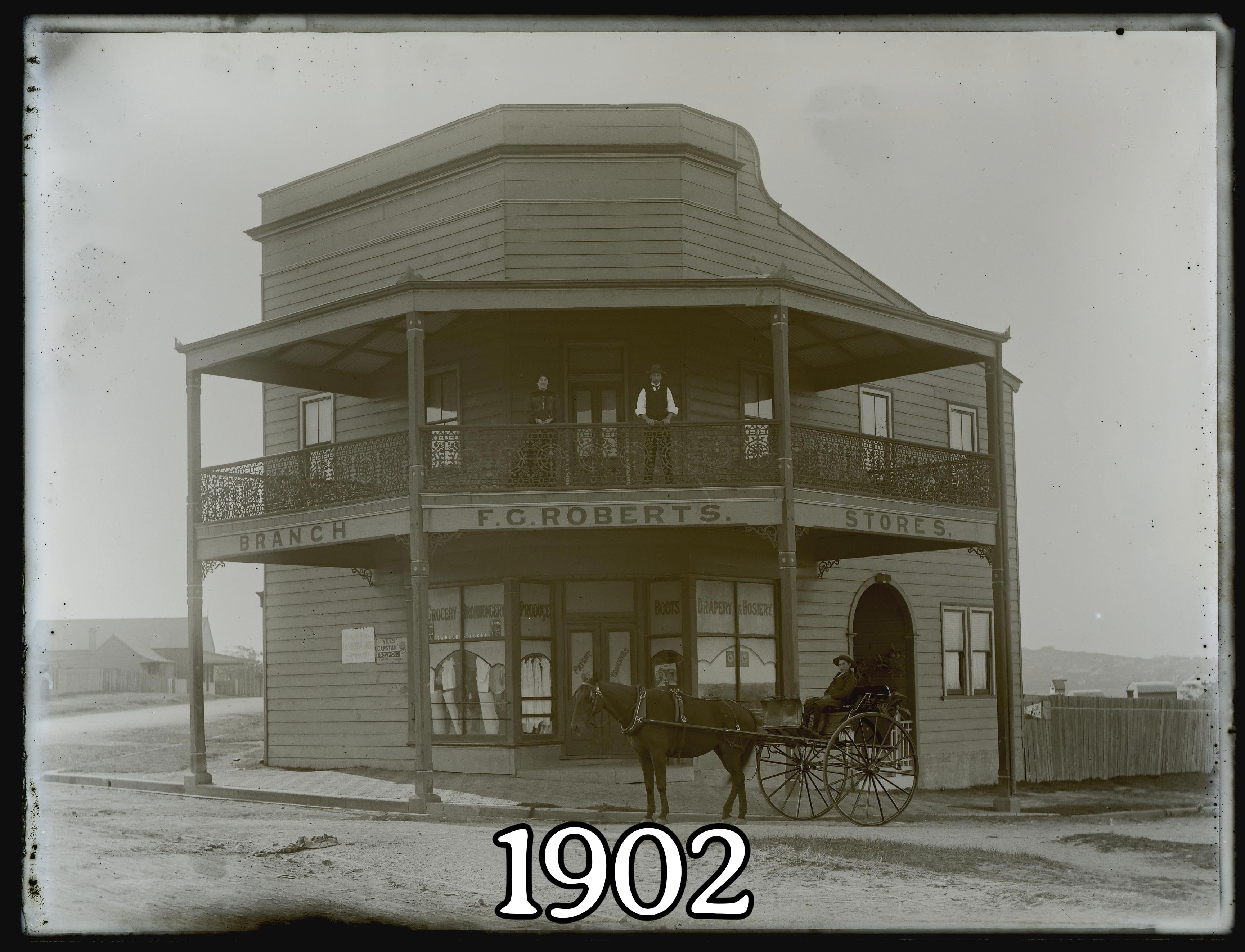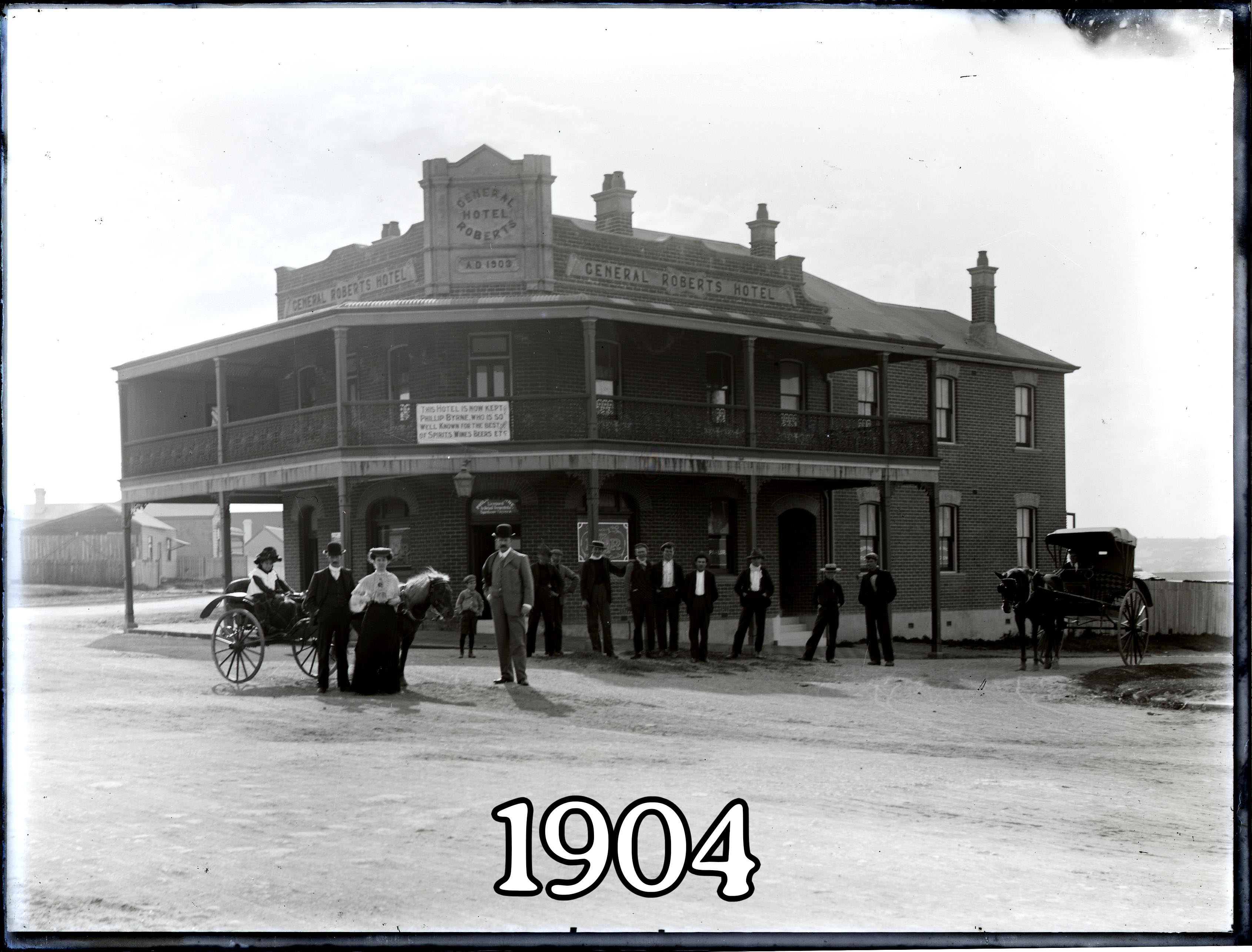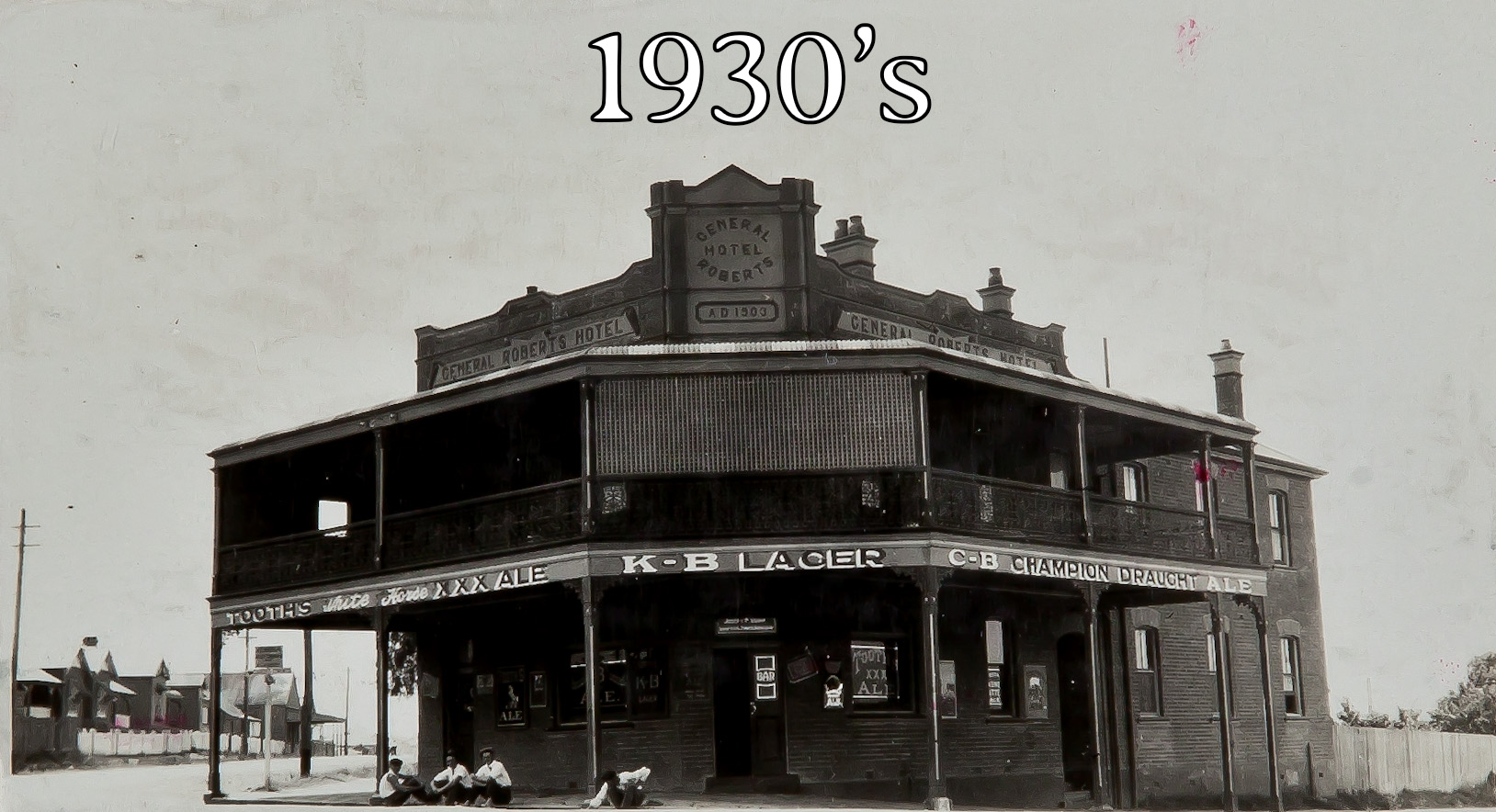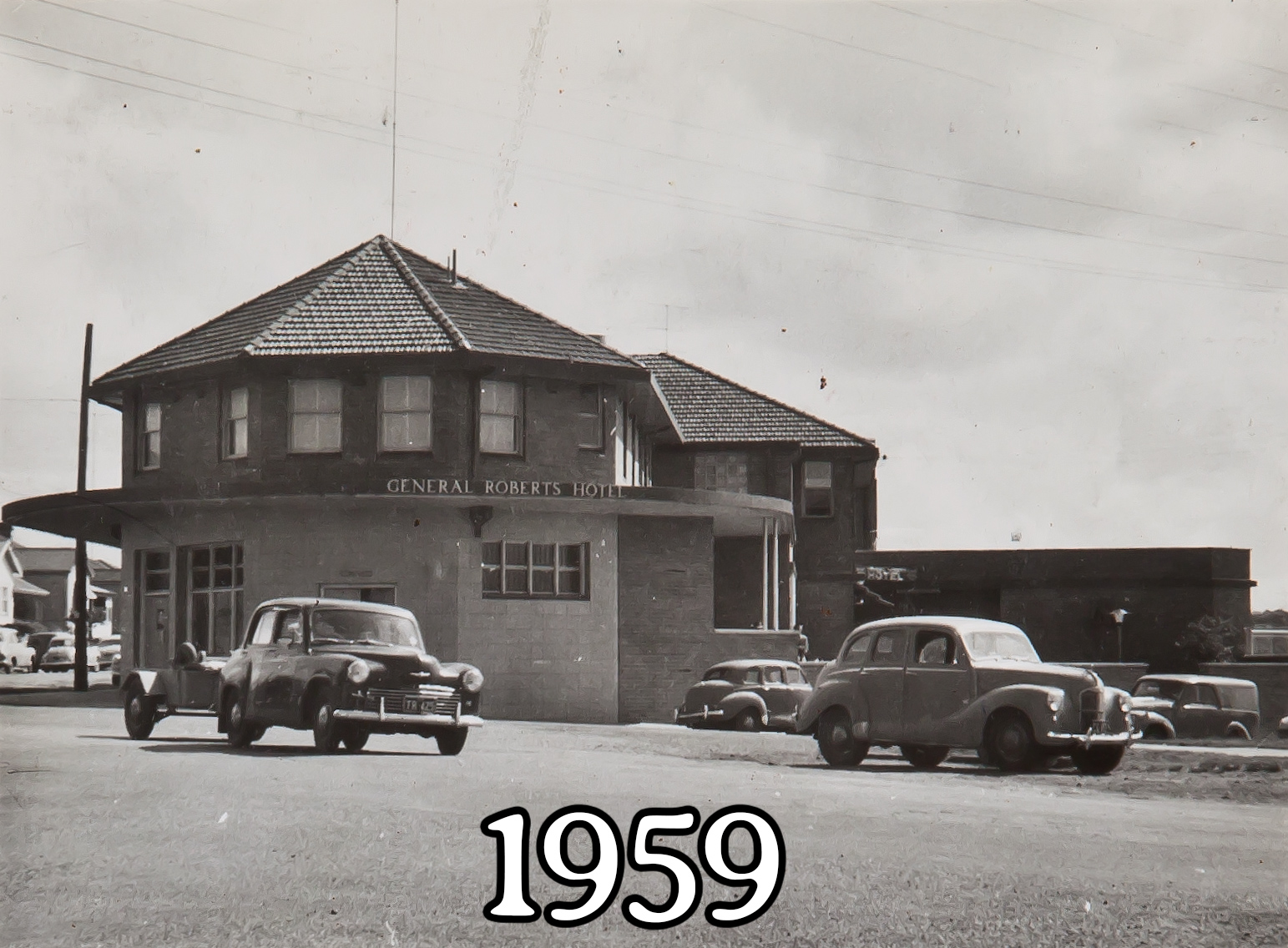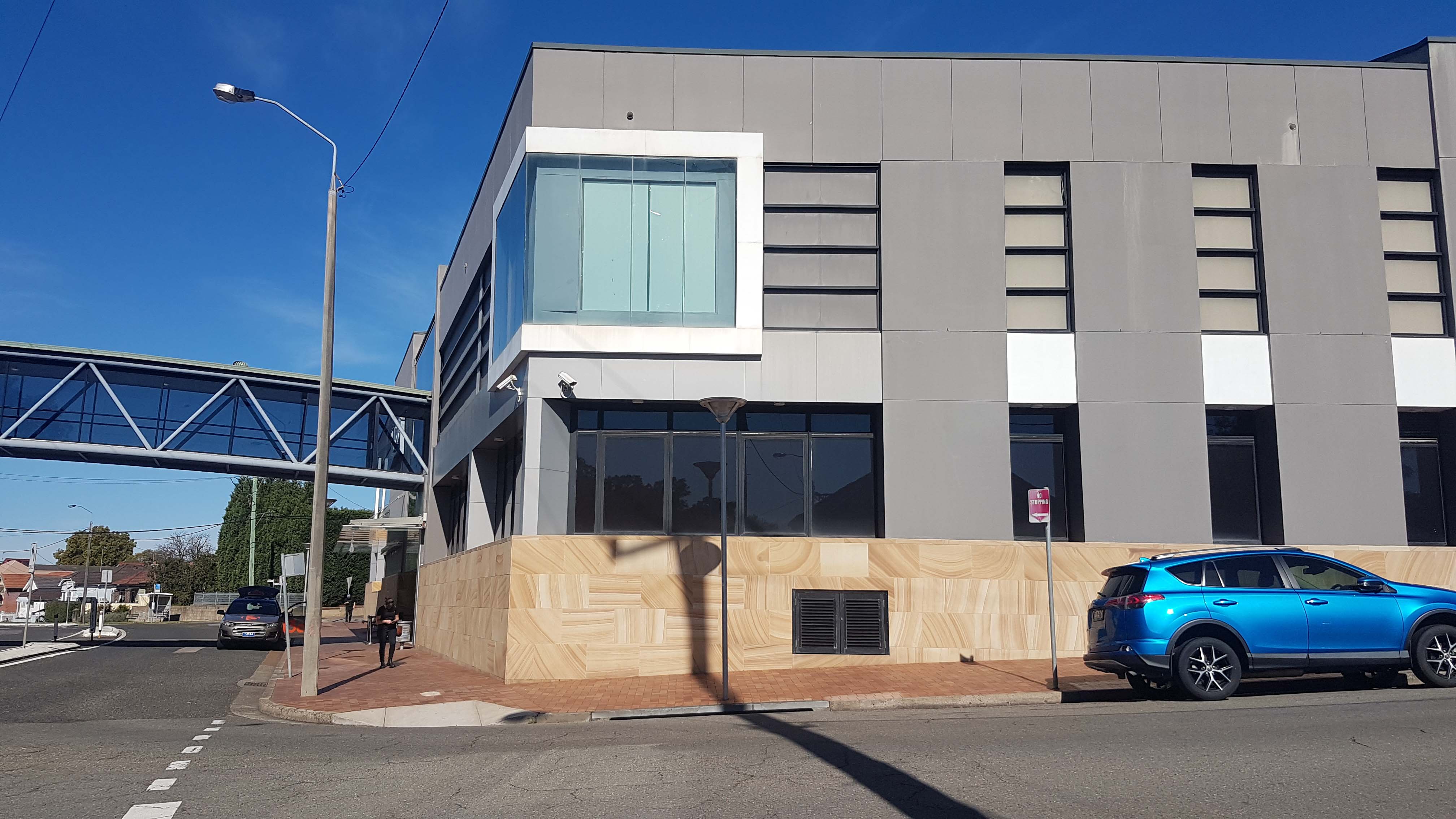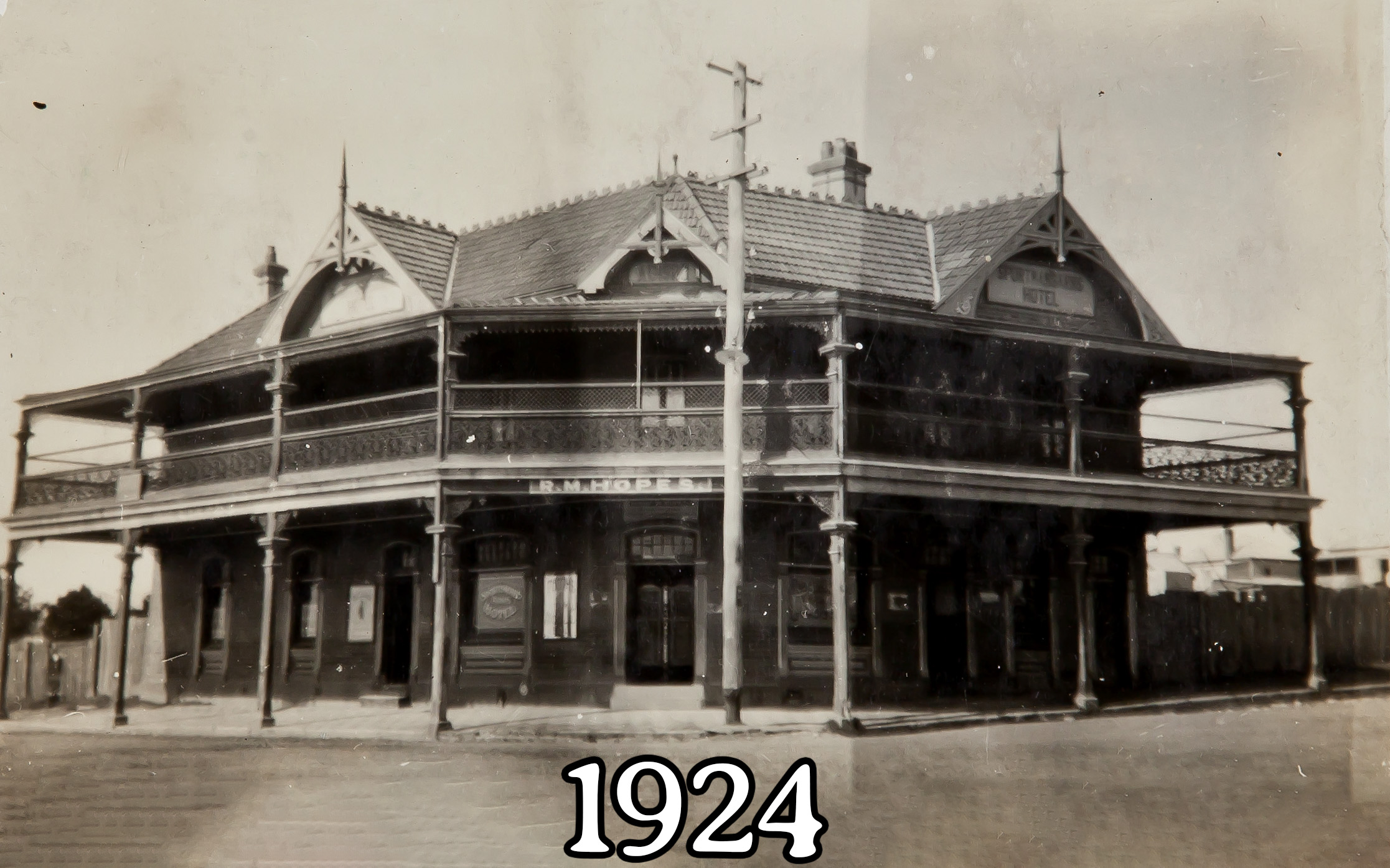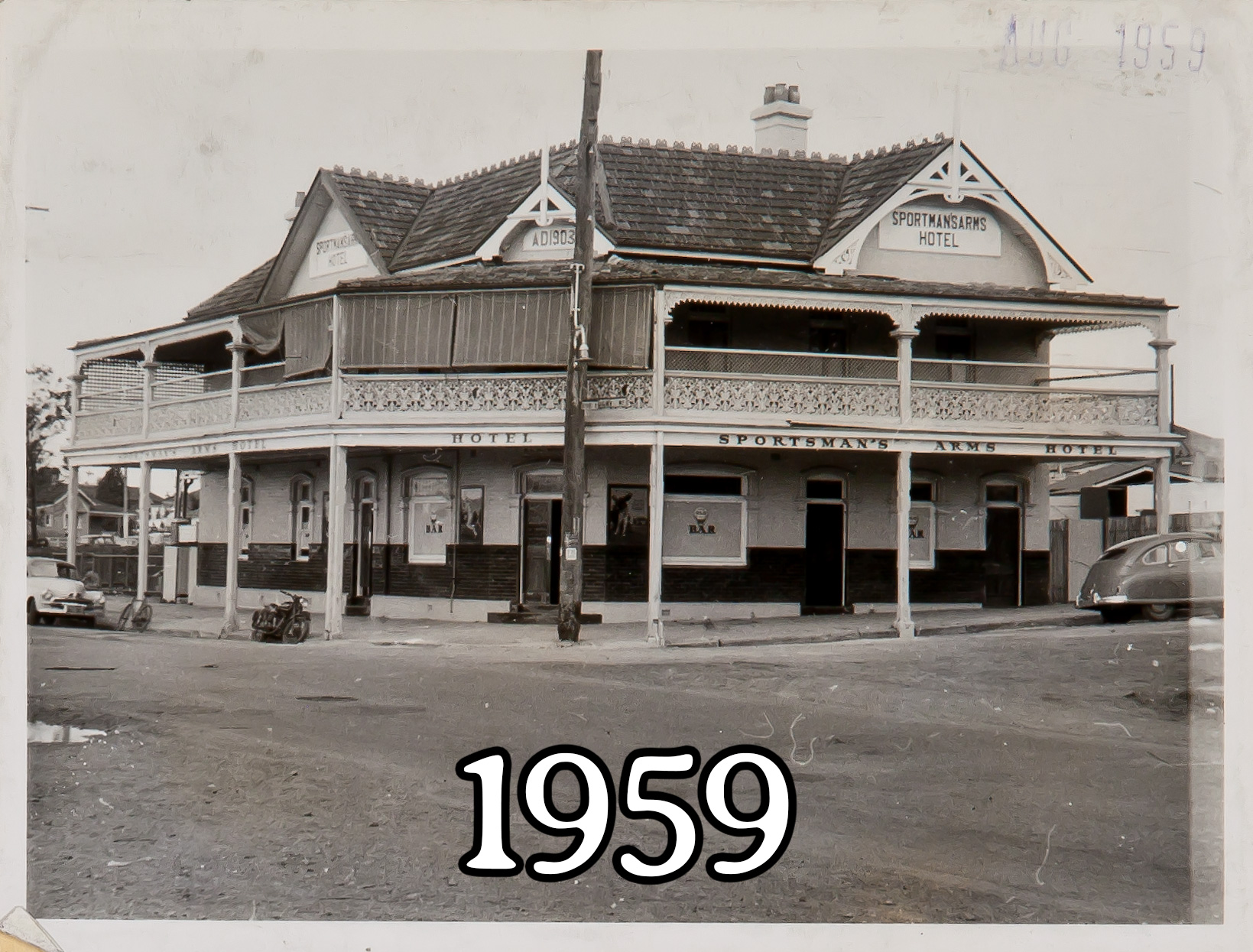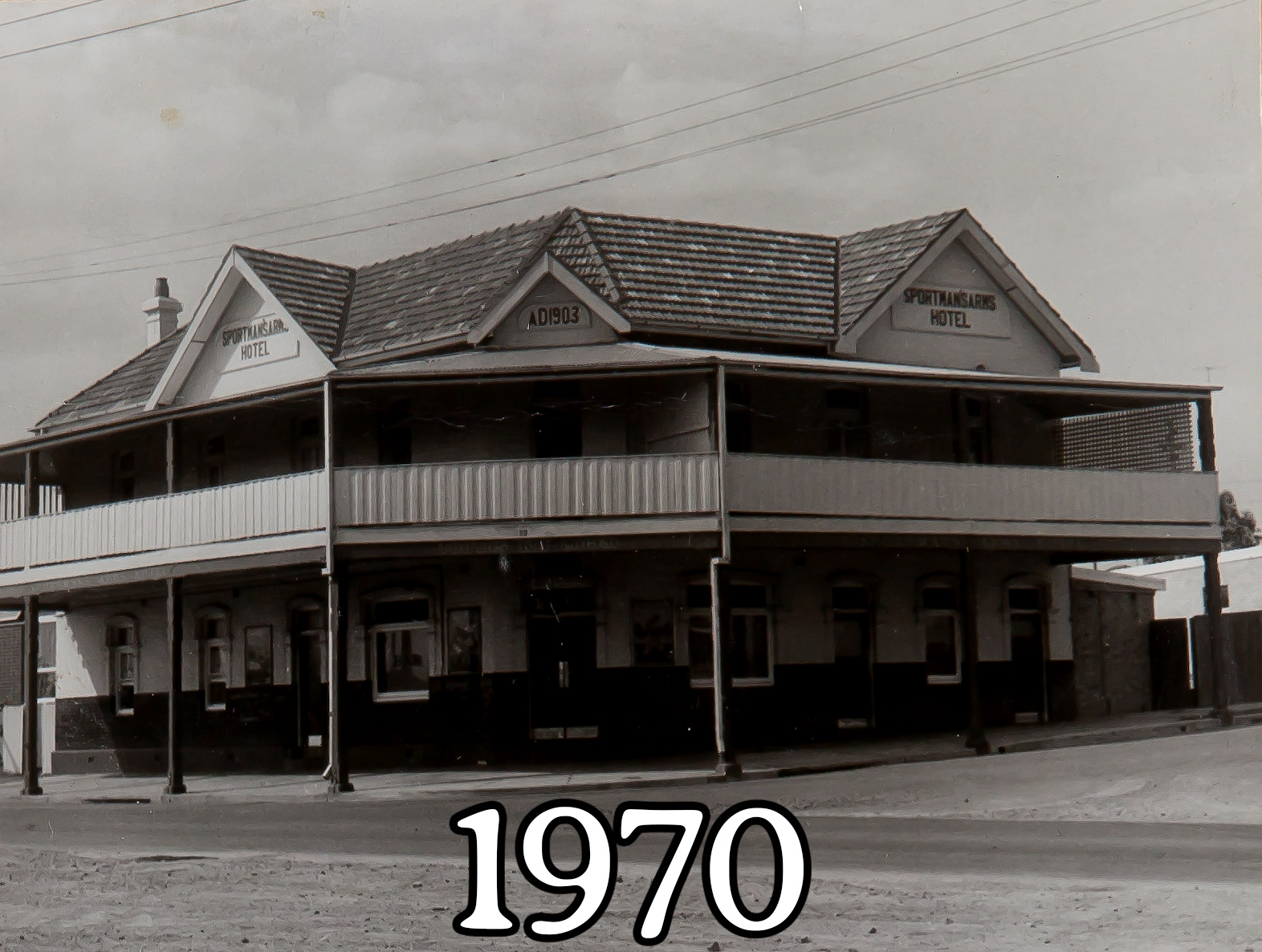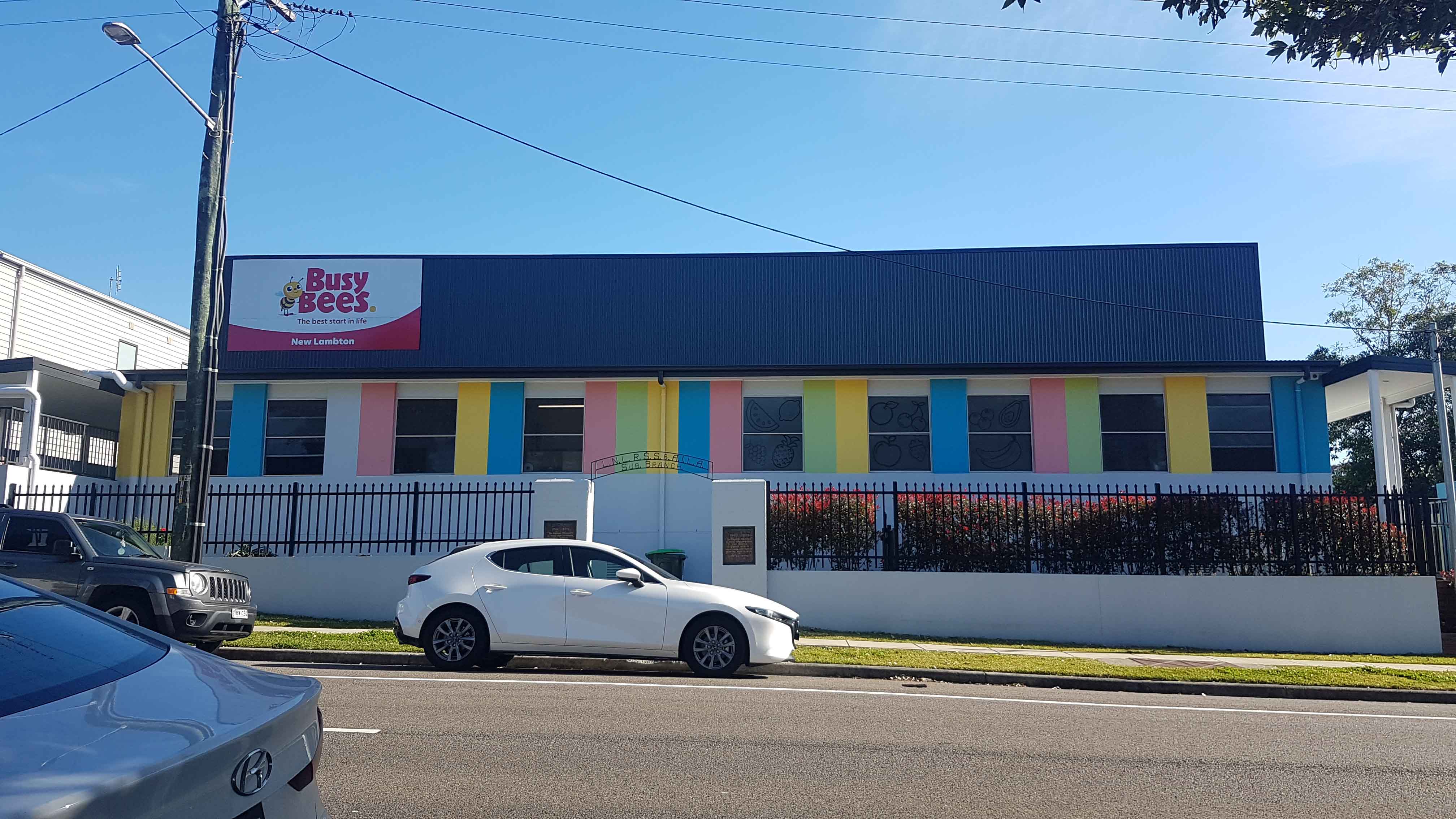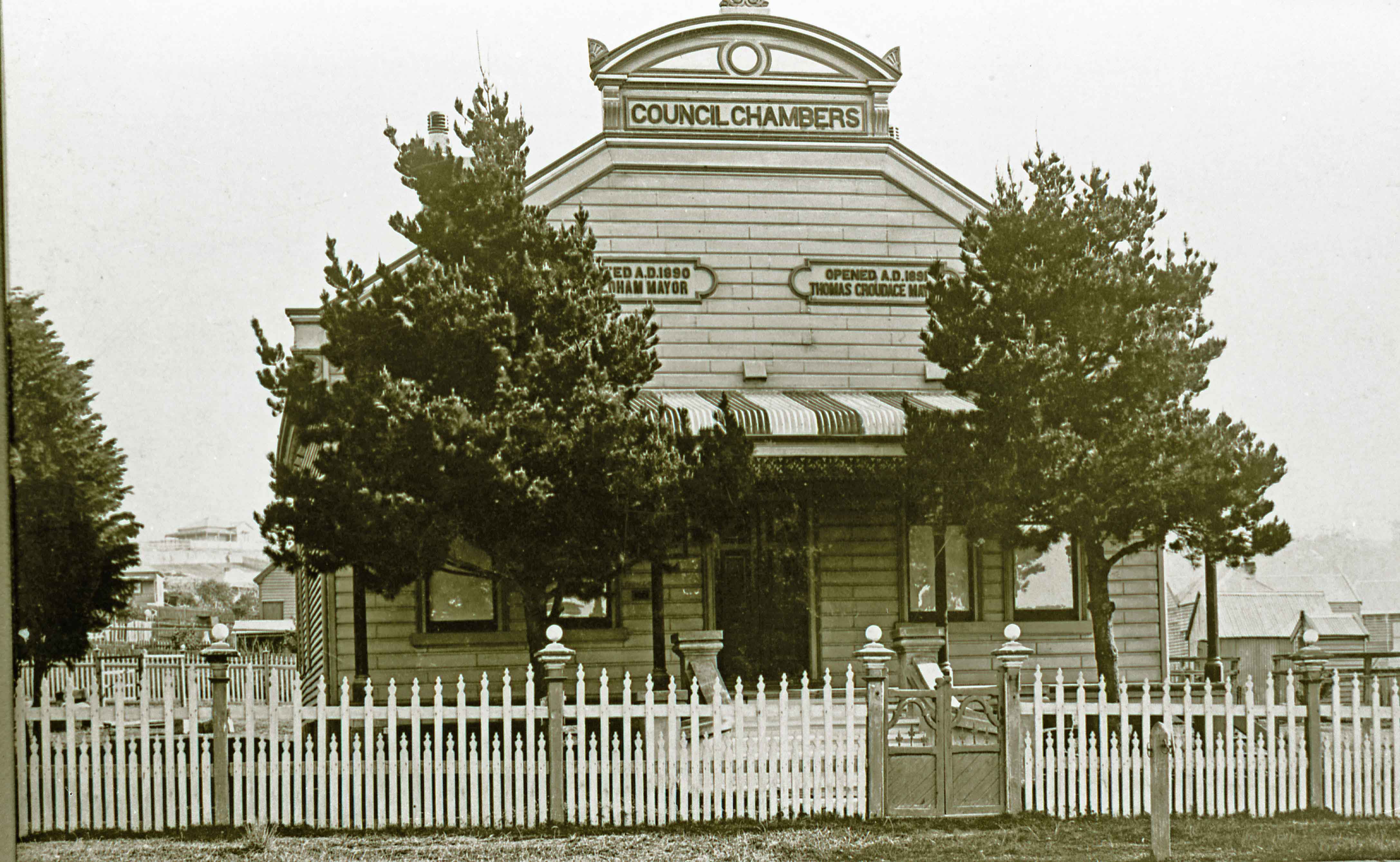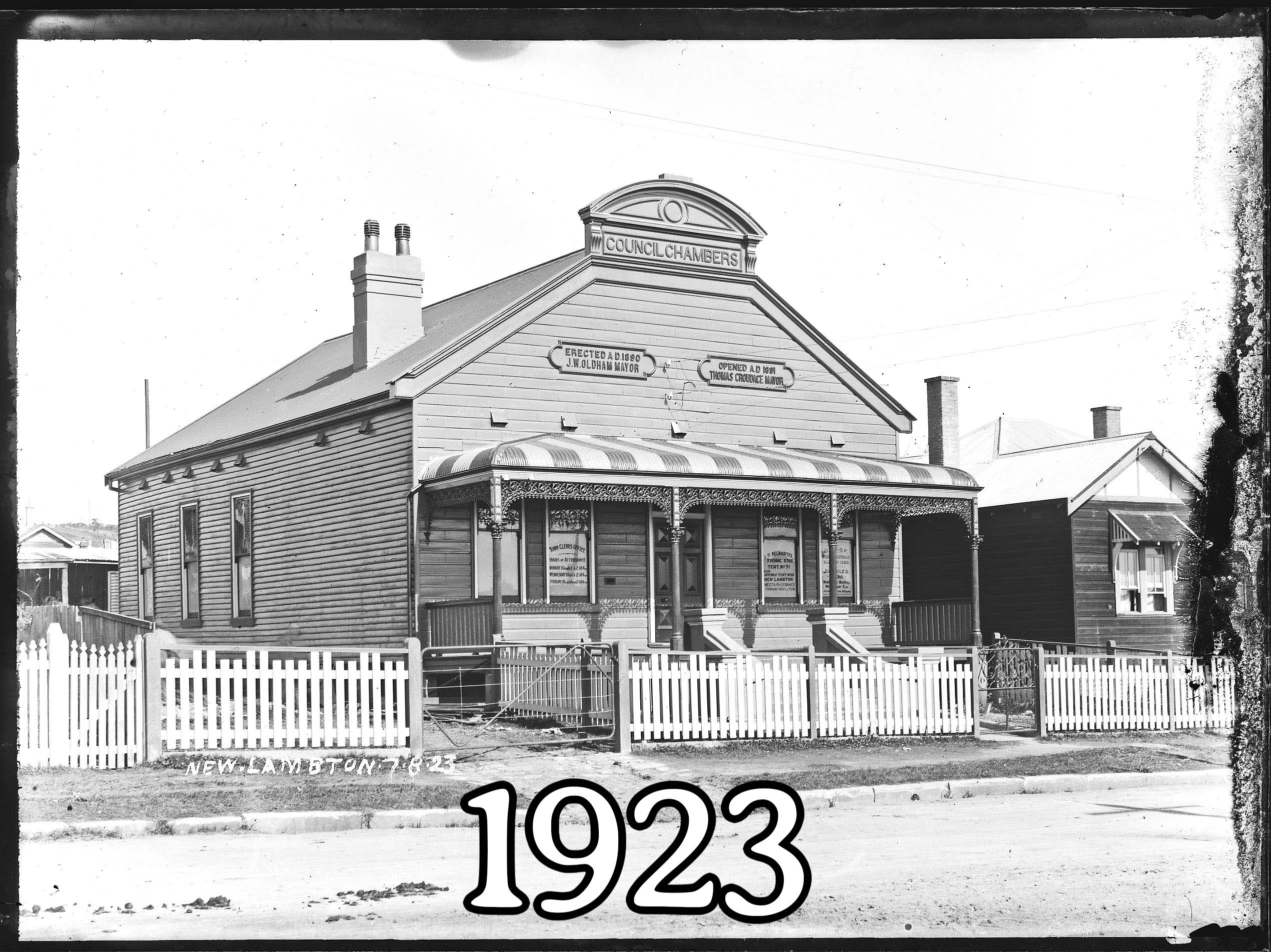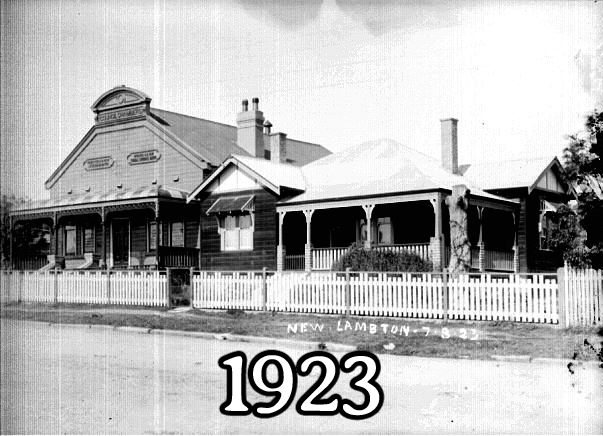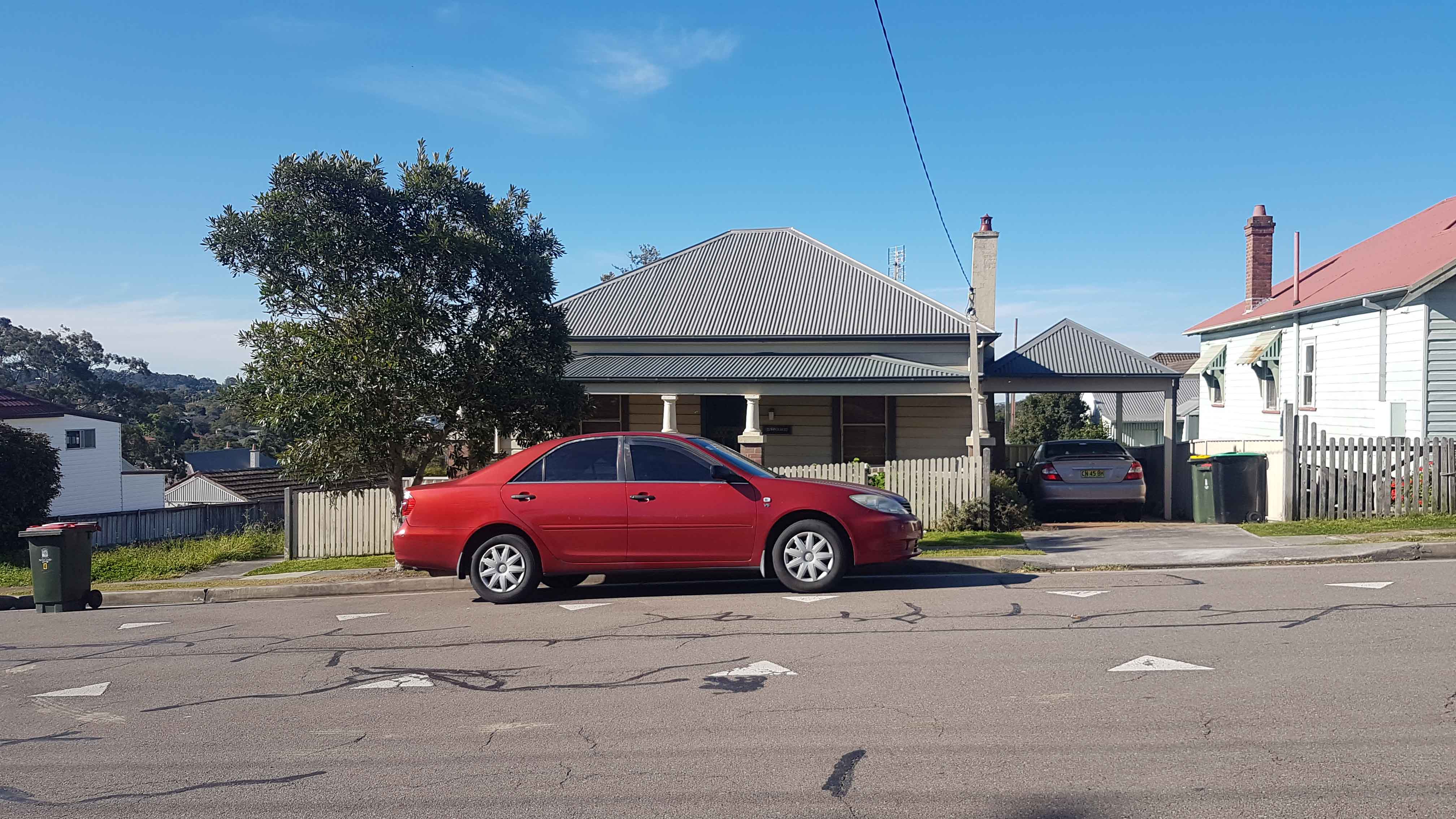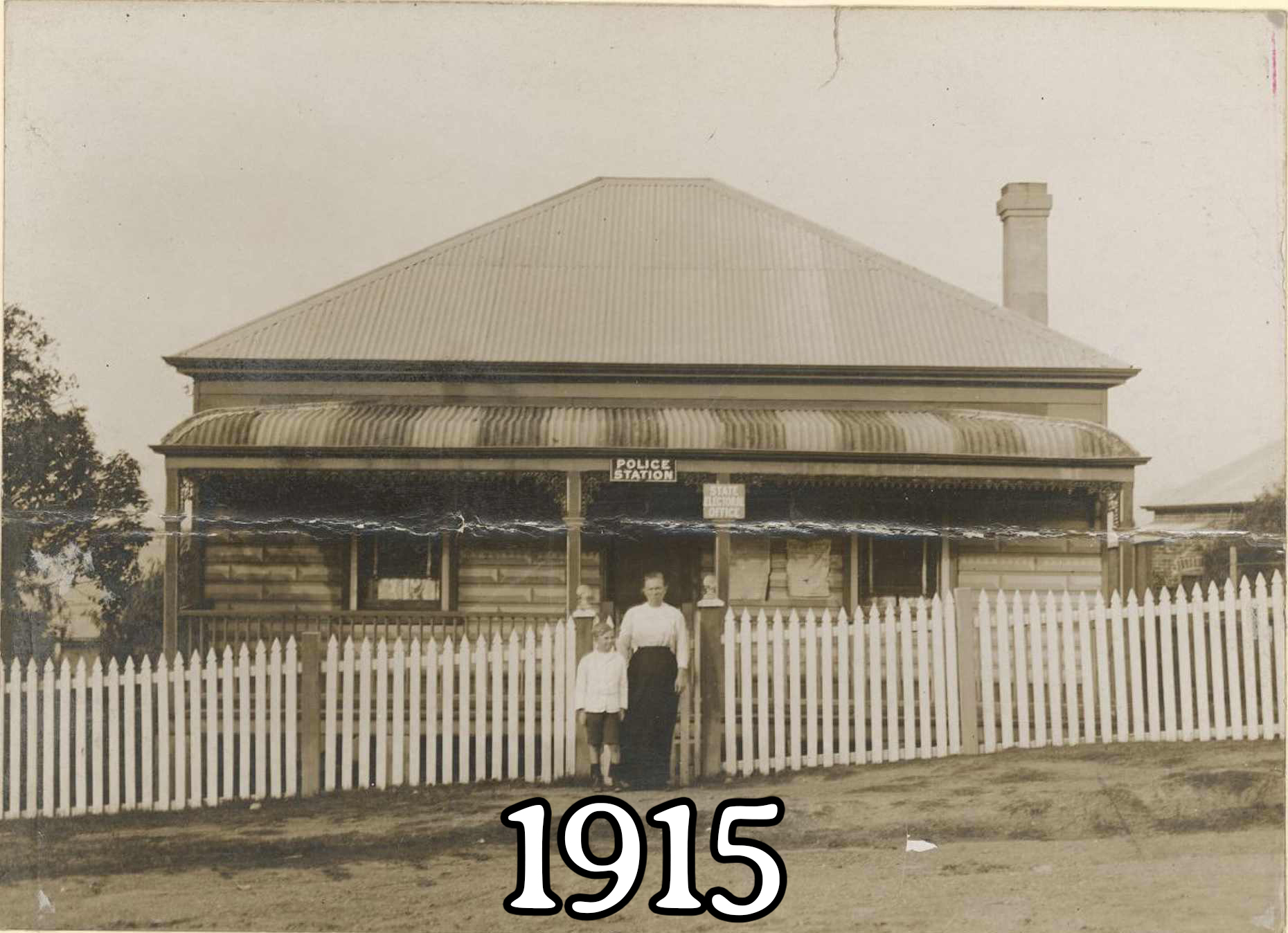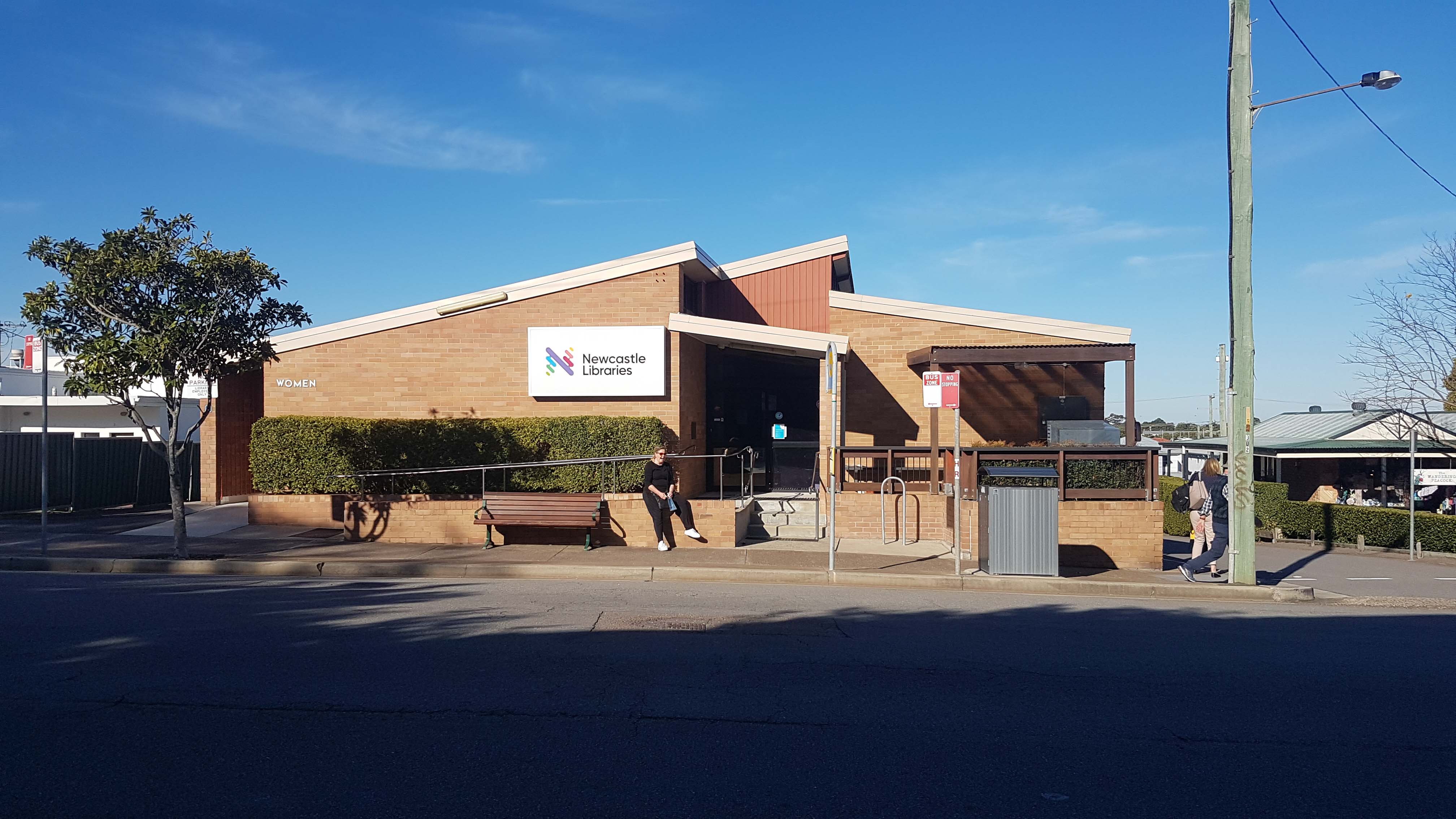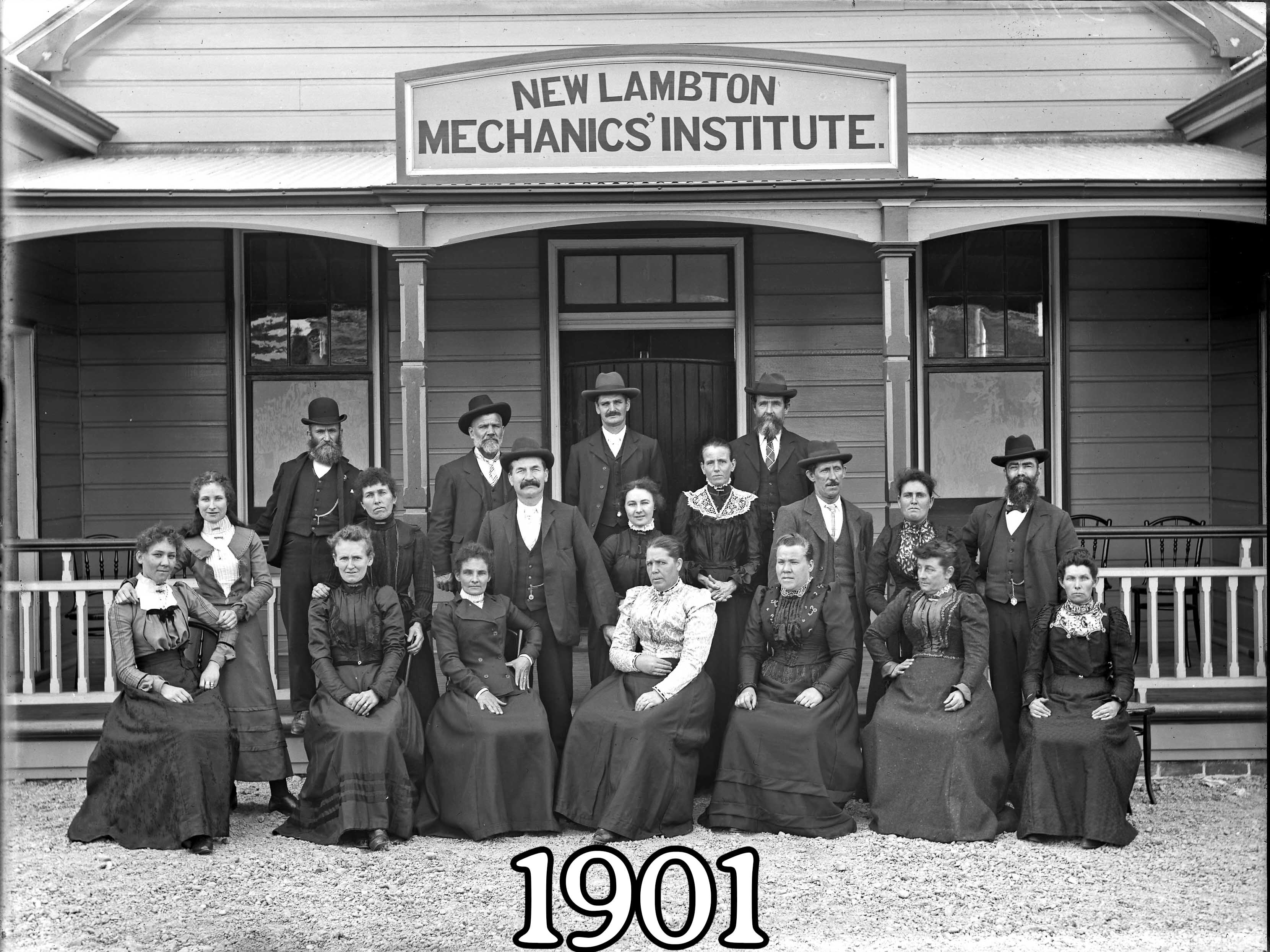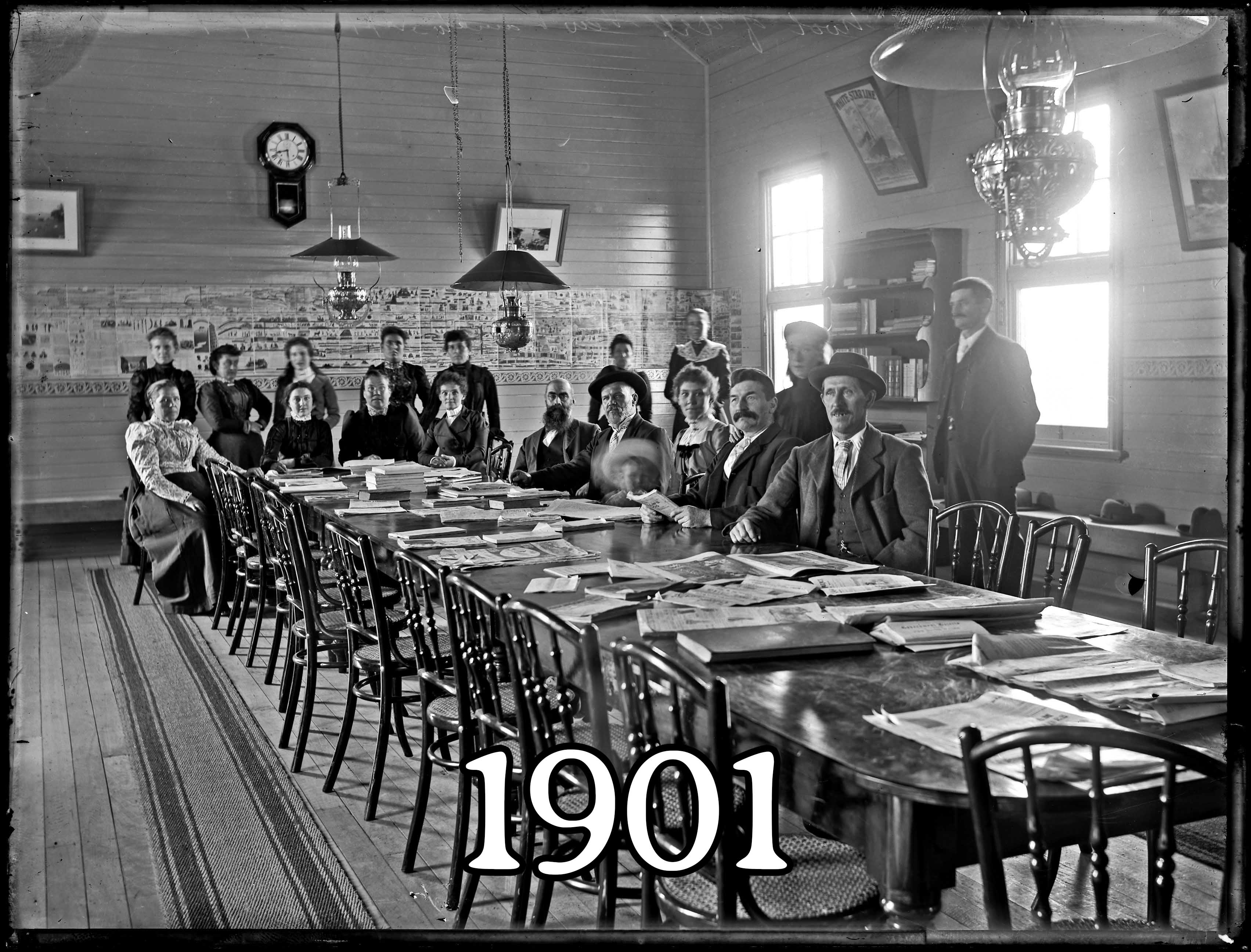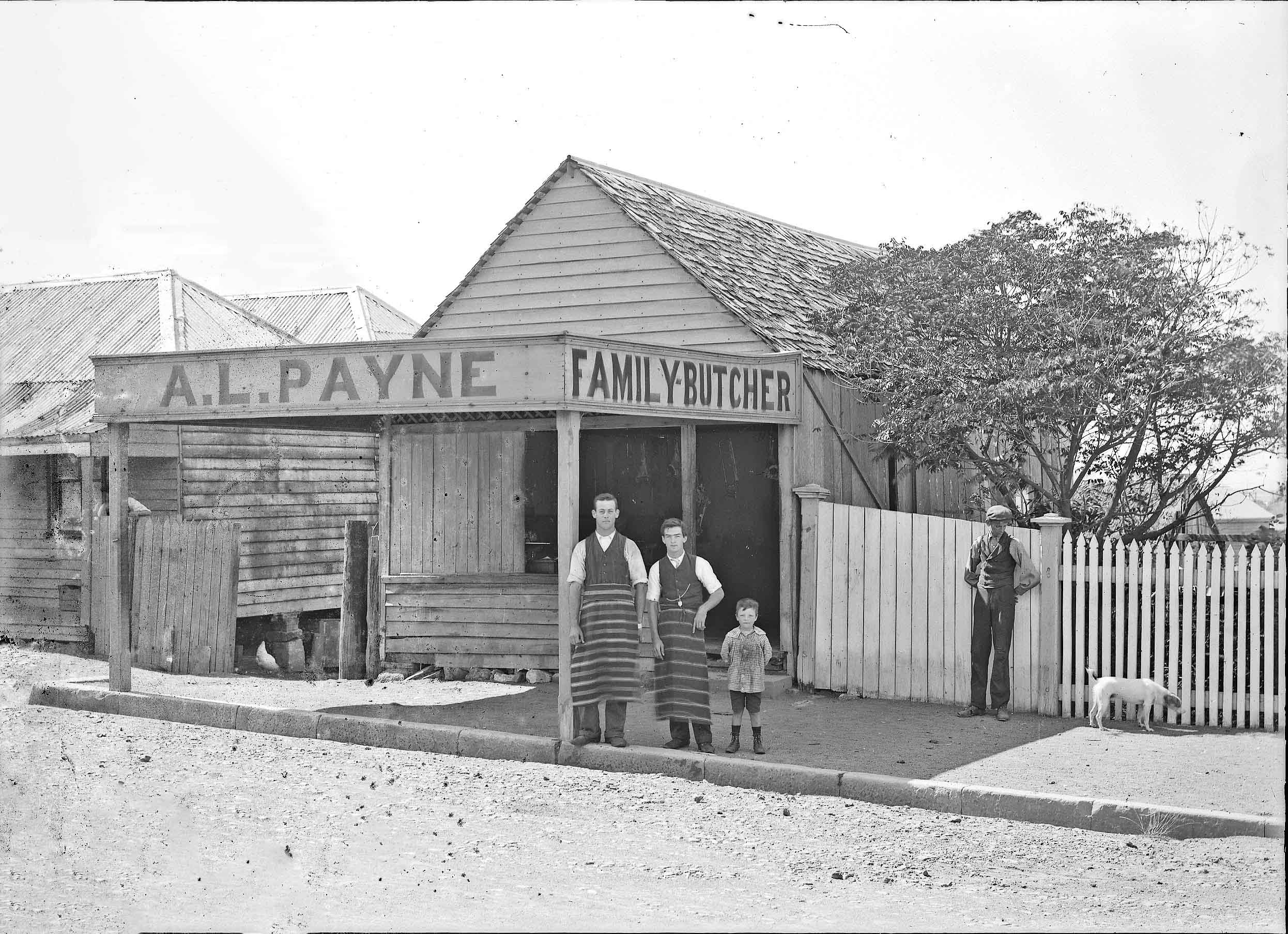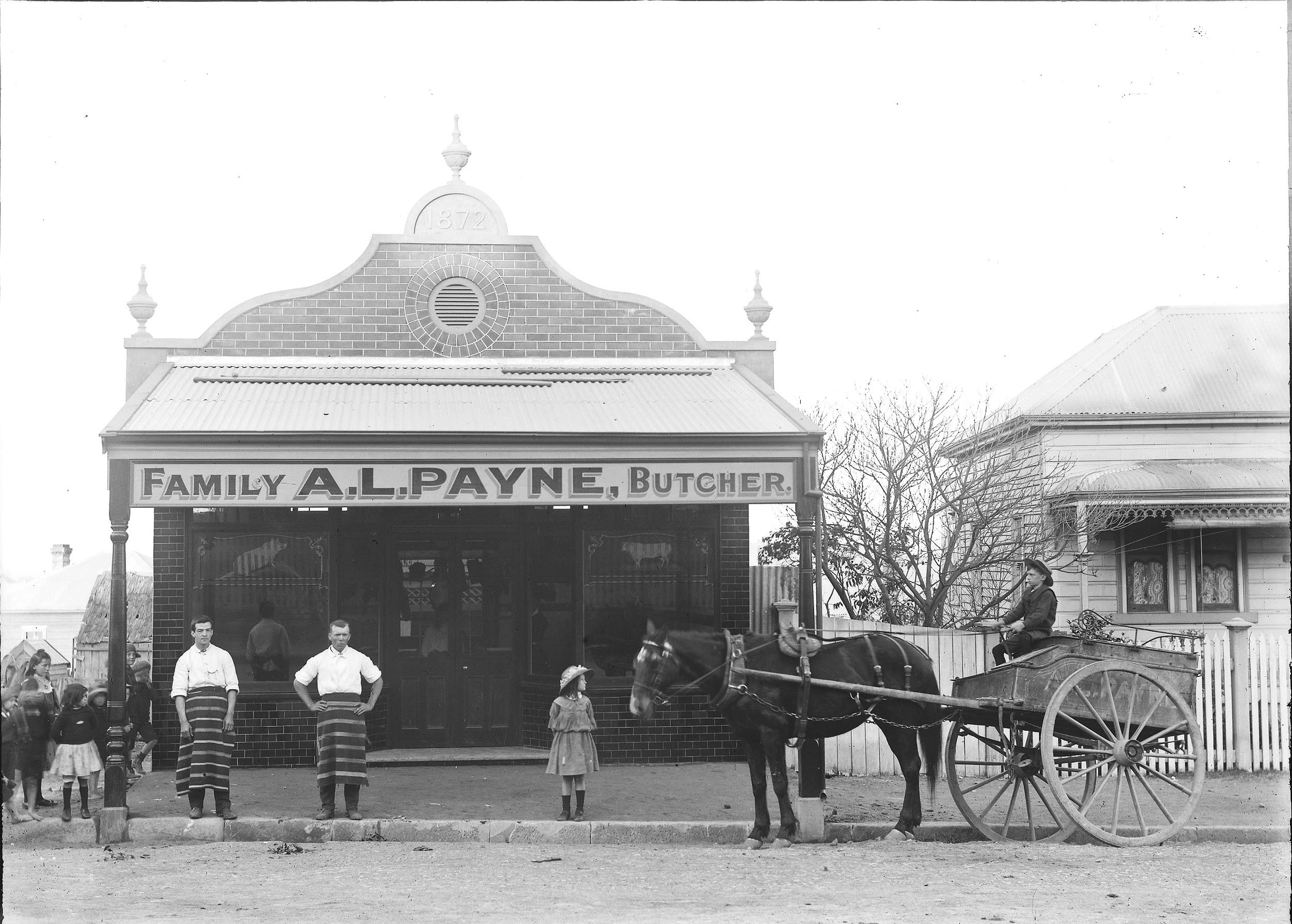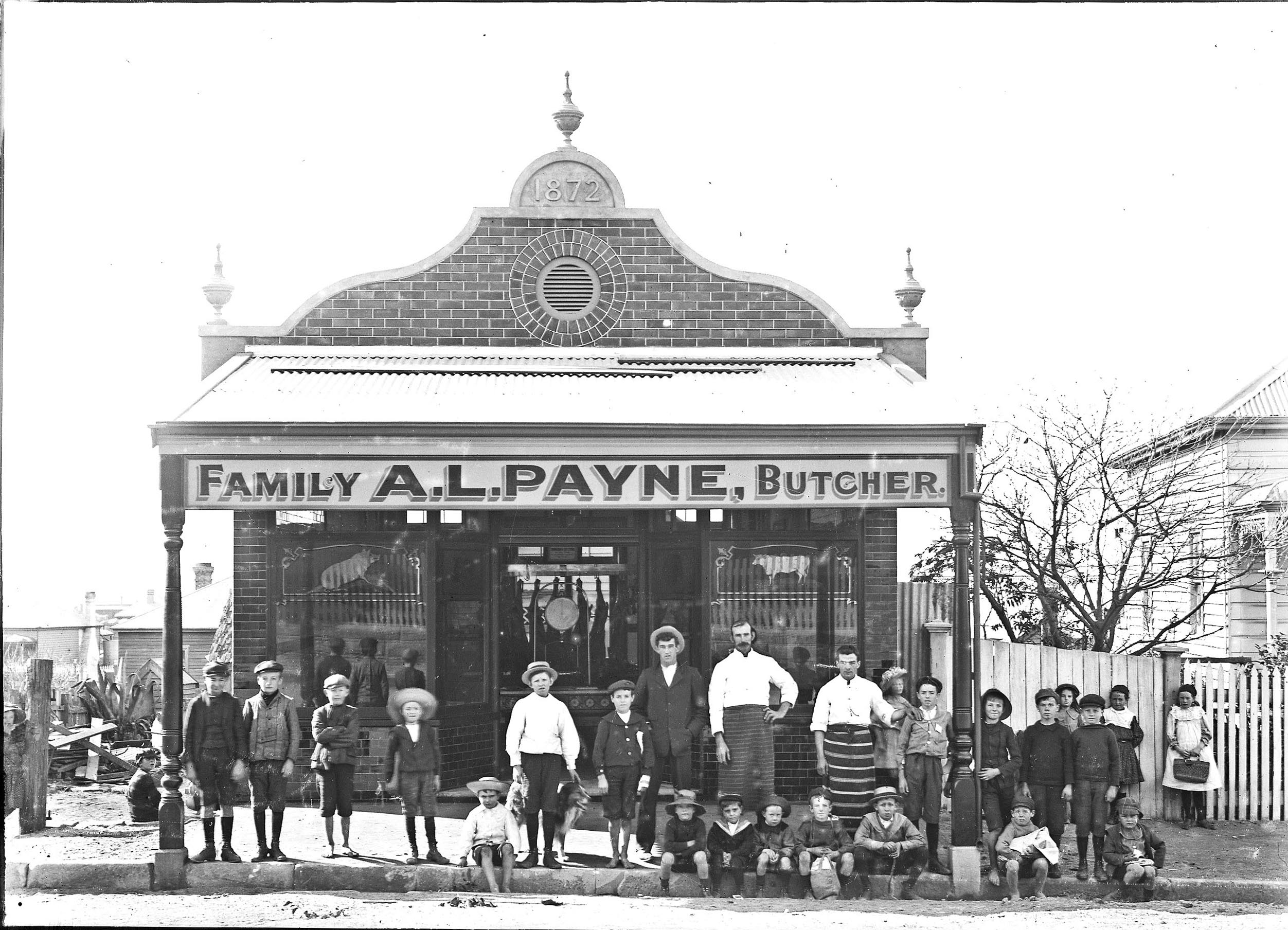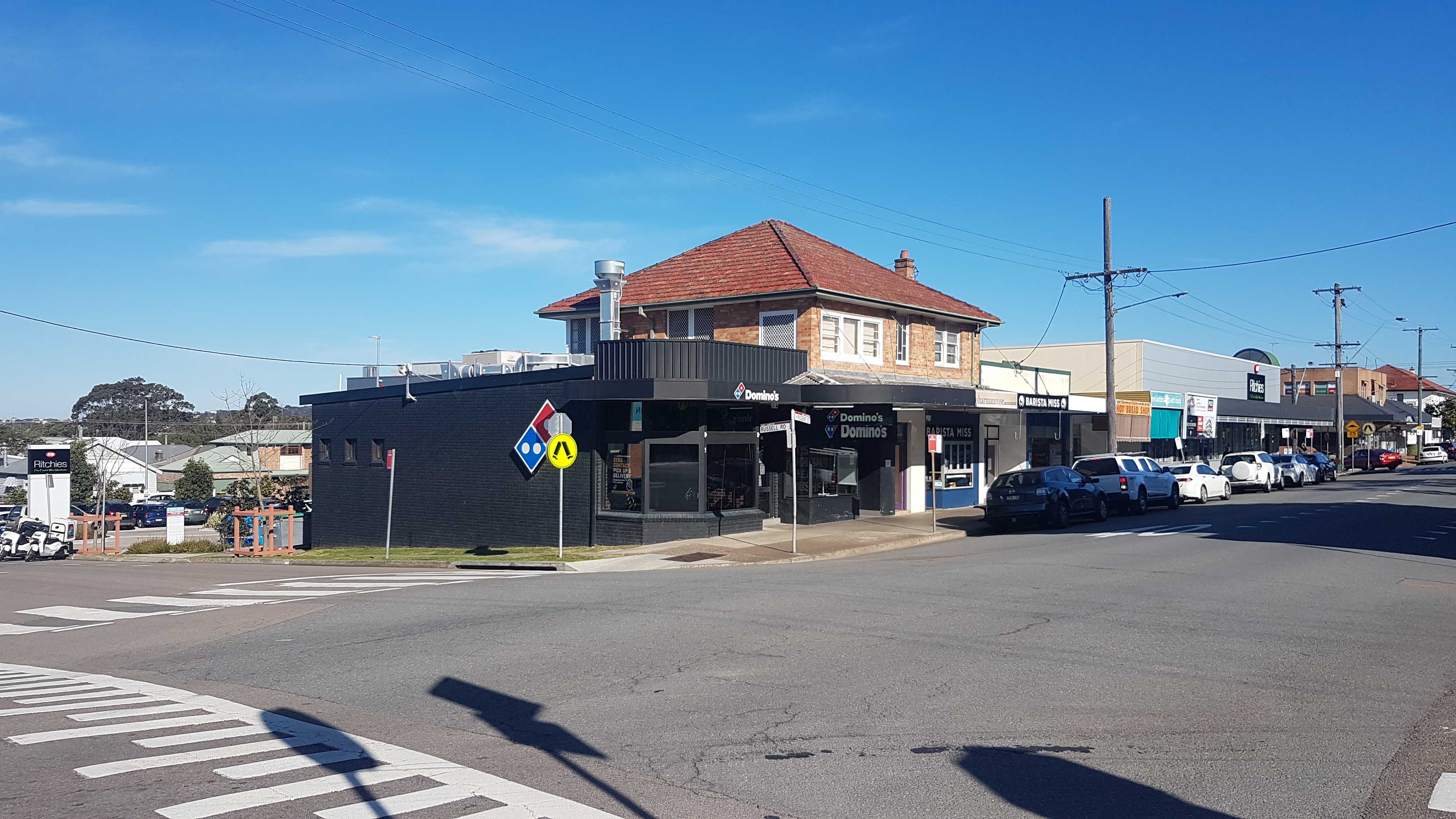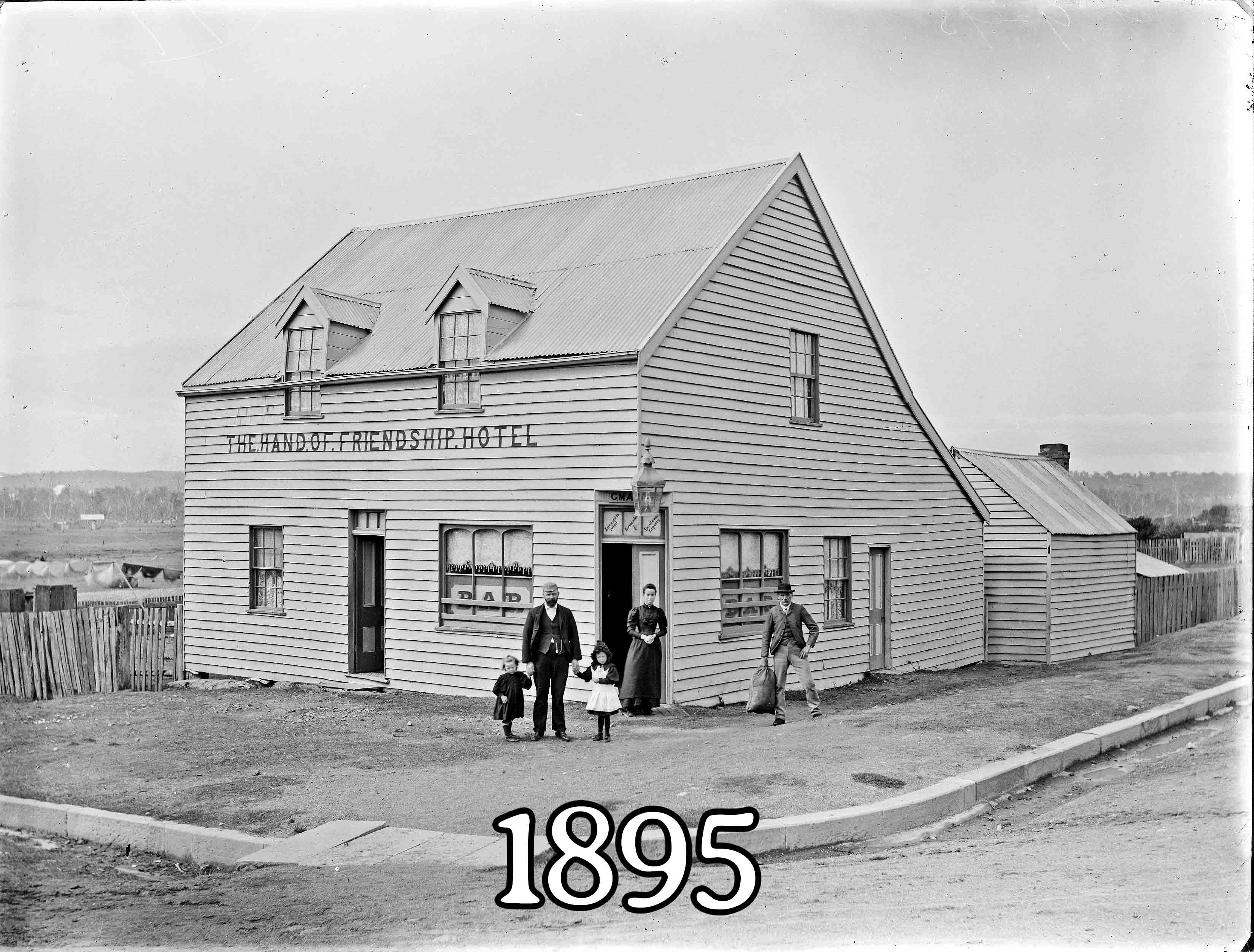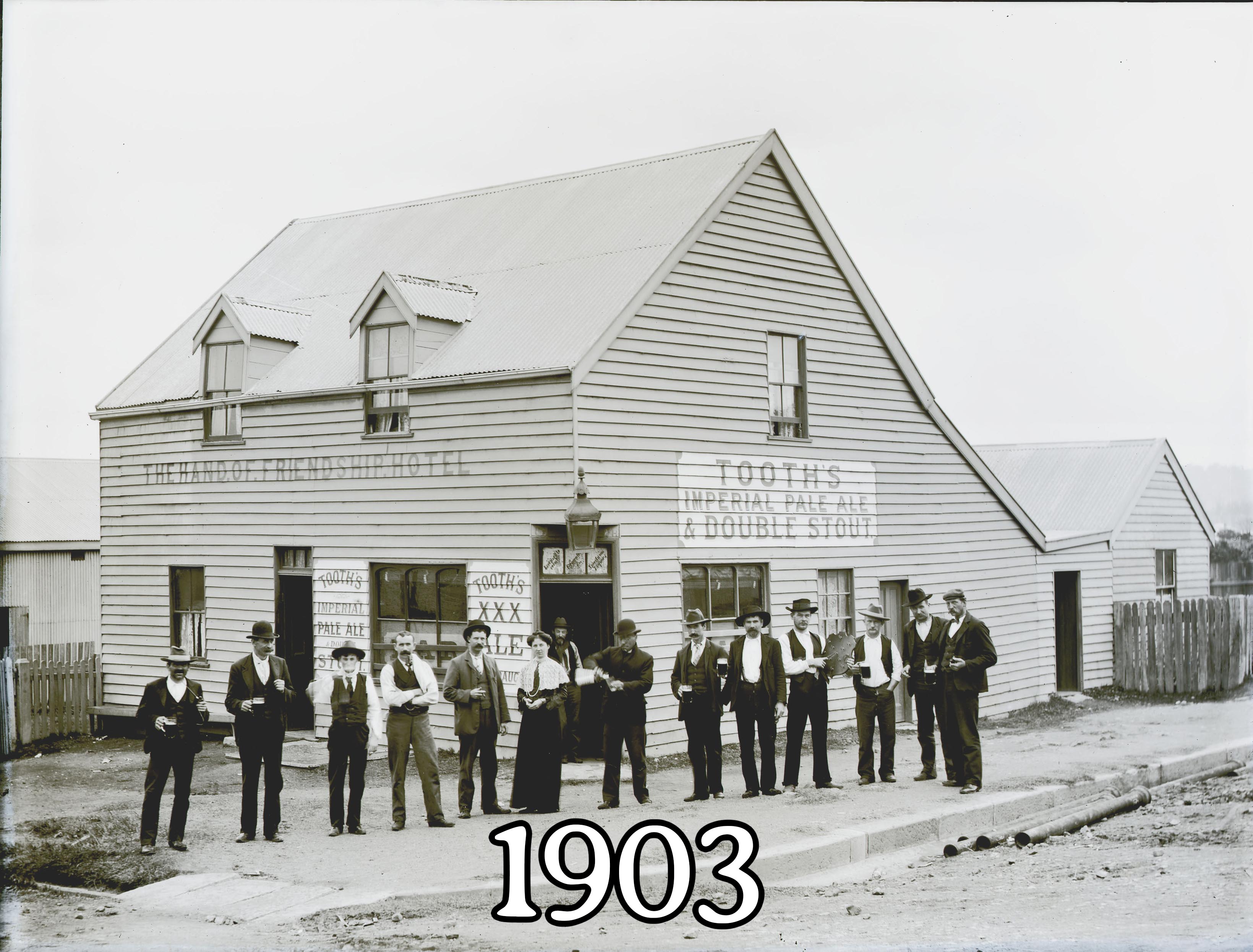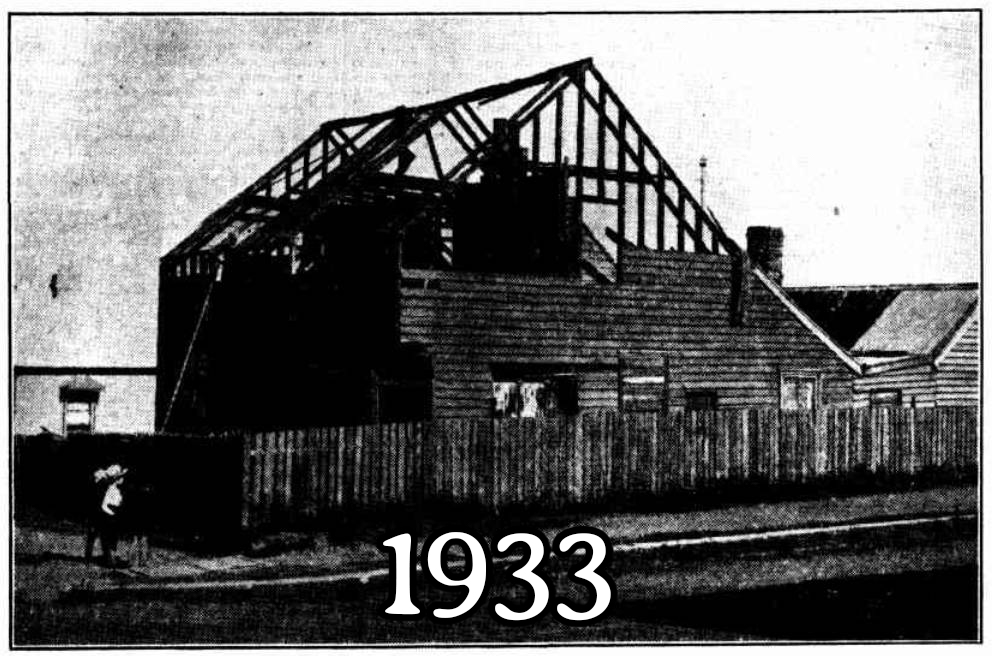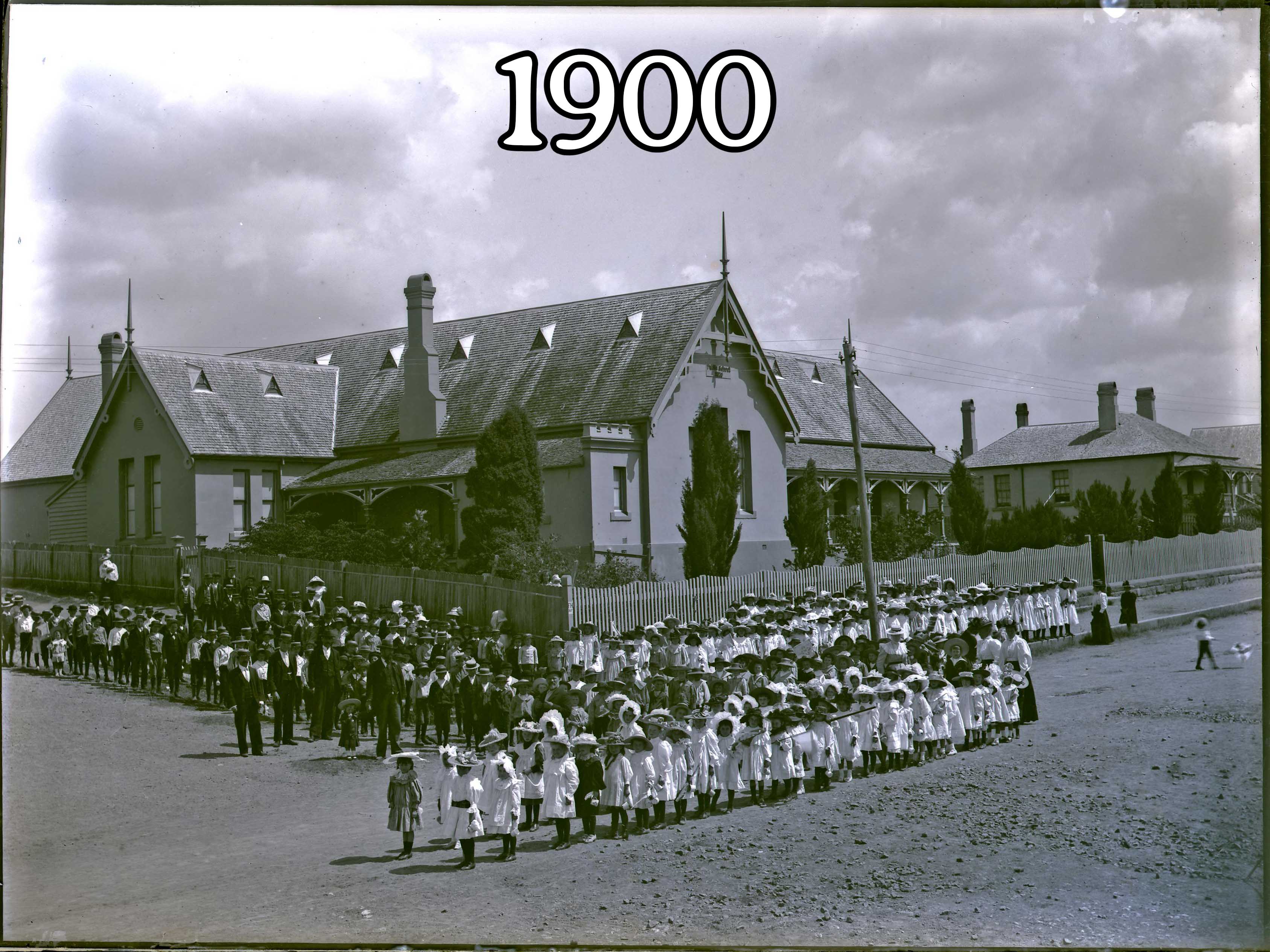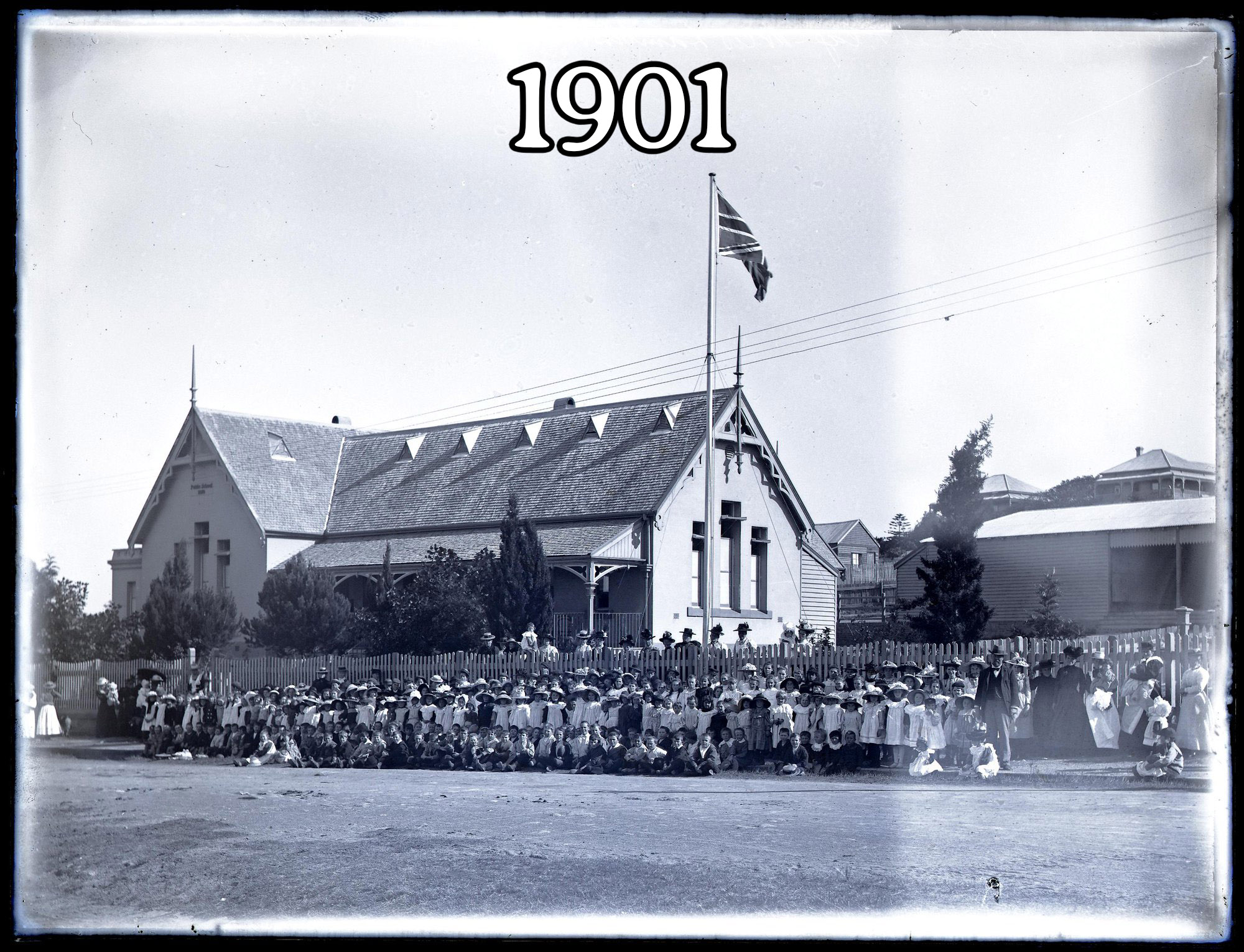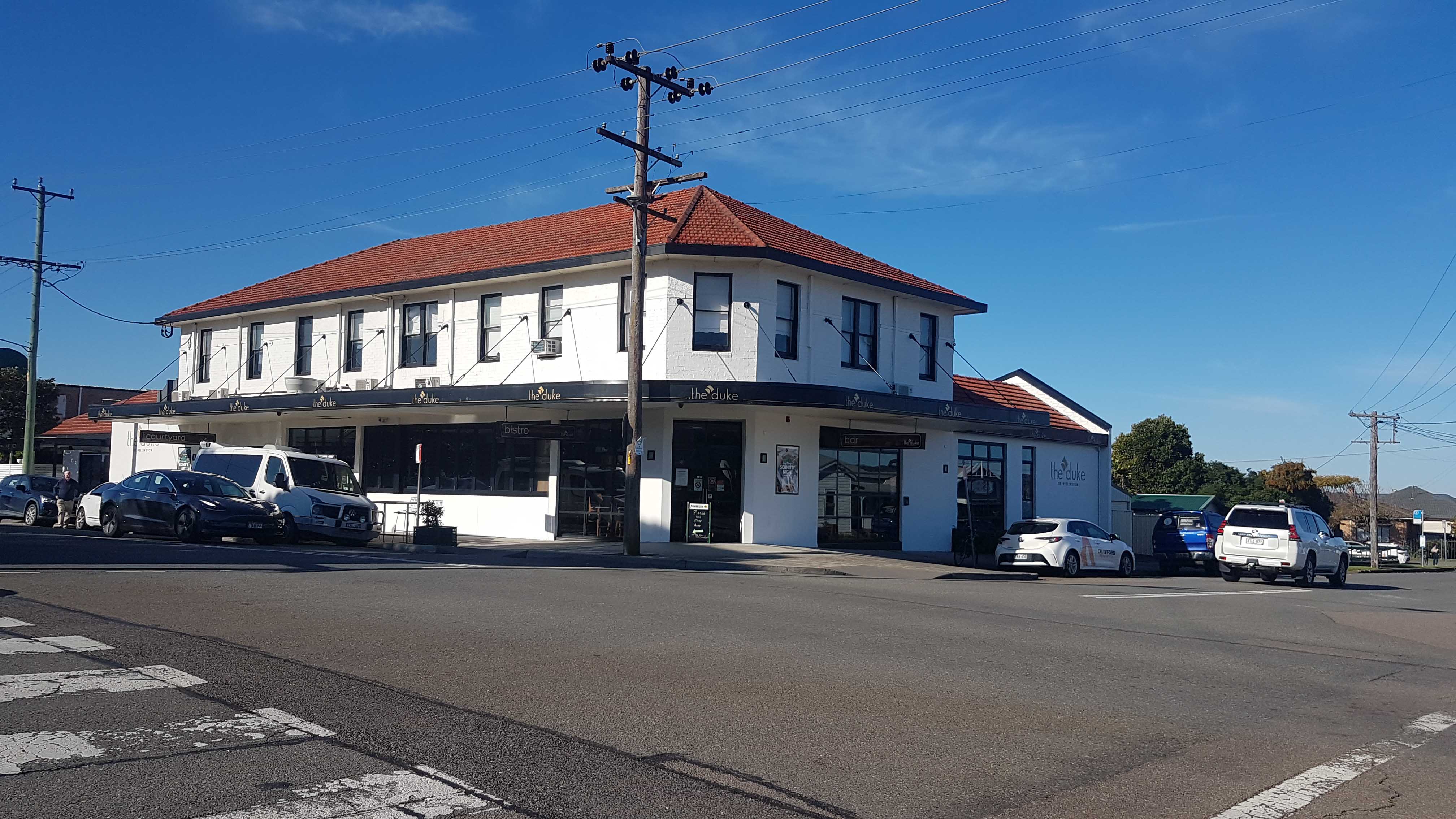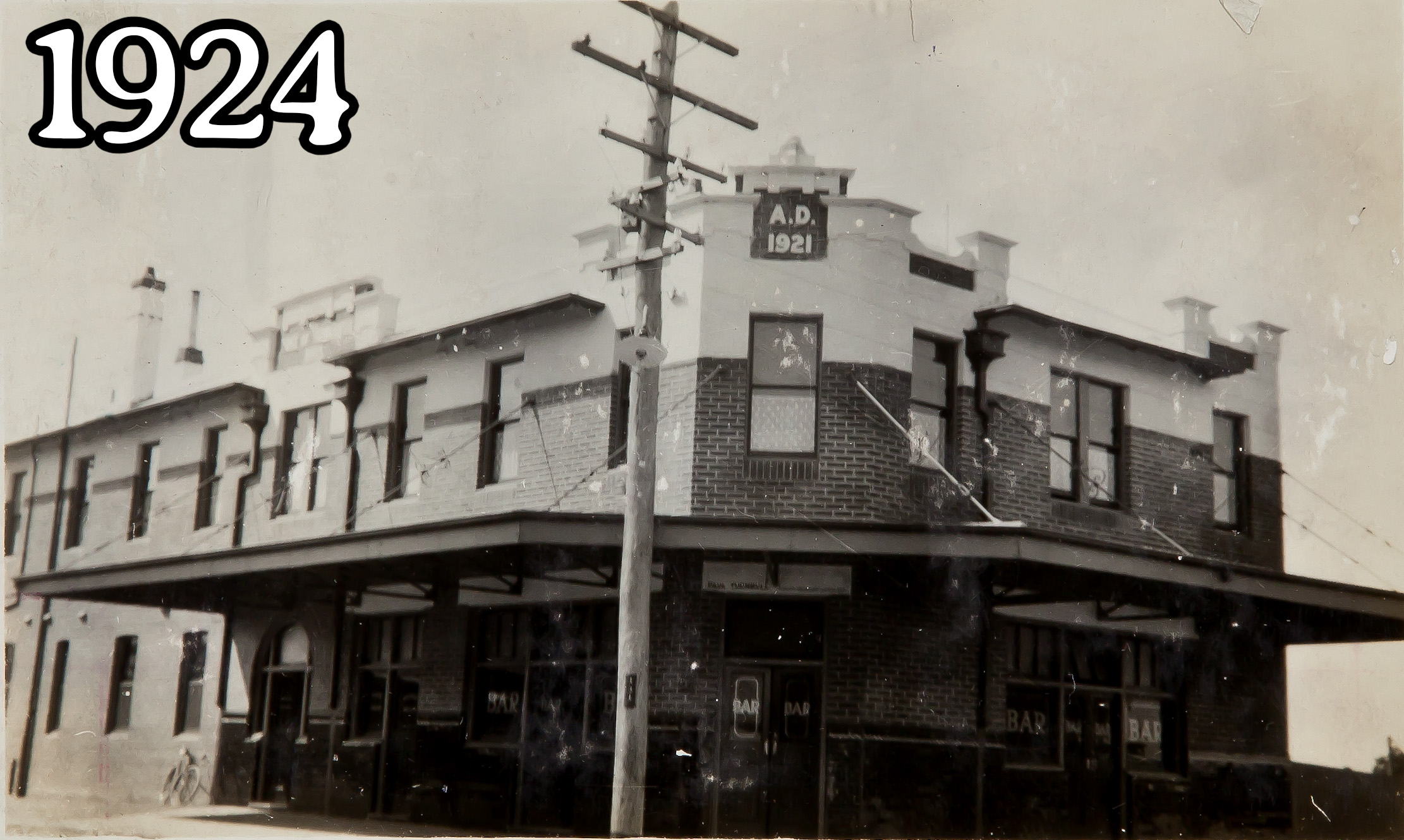New Lambton Heritage Walk
This page contains the fully referenced contents to the New Lambton Heritage Walk on the City of Newcastle App. If you would like to do the walk, please download the app to your phone via the Google Play store or Apple App store. Then scroll down to walking trails and swipe across to the New Lambton Heritage Walk.
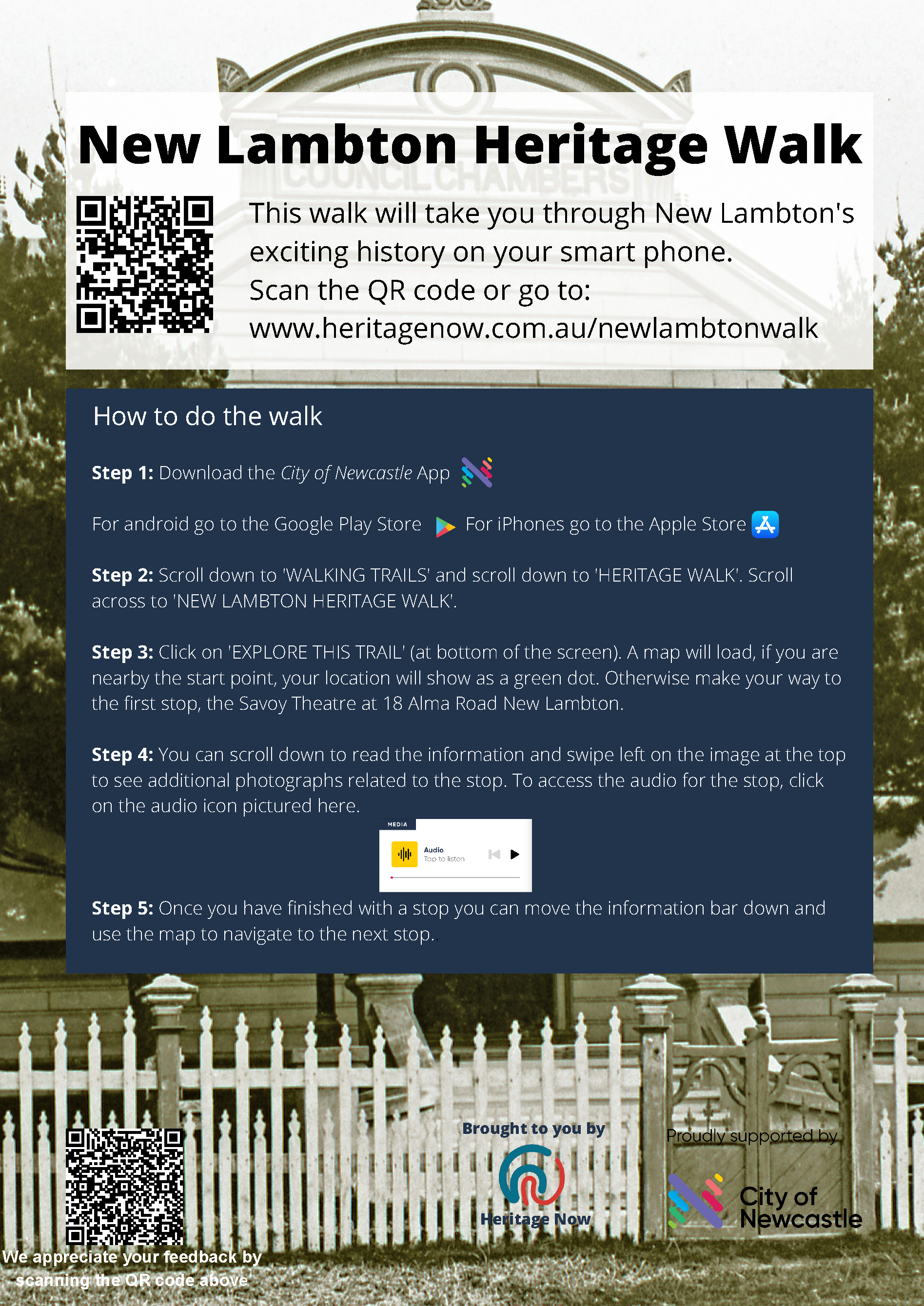
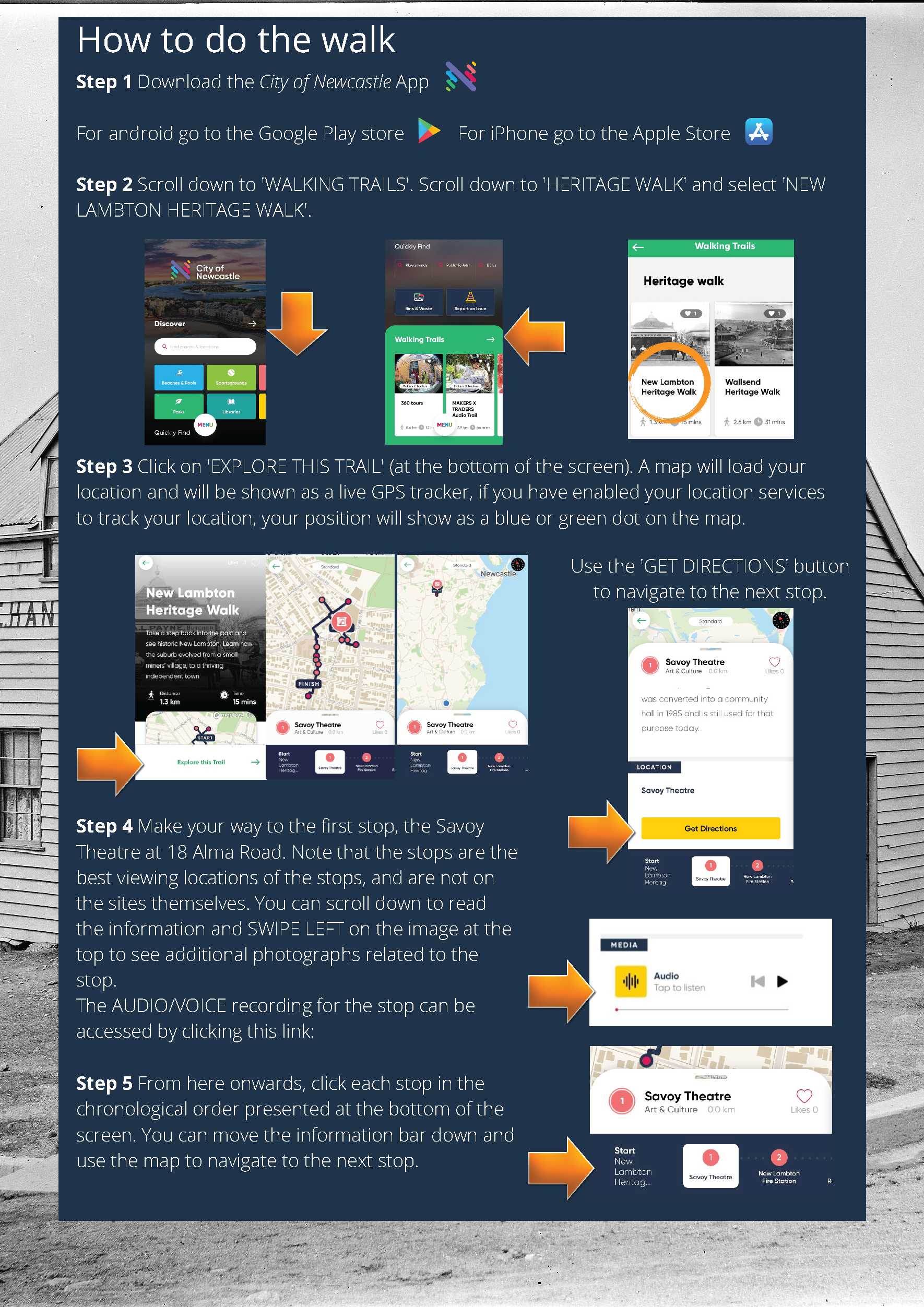
Savoy Theatre
The Savoy Theatre opened in 1937. It was the first Australian theatre to be installed with a Hammond organ.1 Regular organist, Wilbur Kentwell’s toe tapping performances became a standard feature at the Savoy. He played before movies, during the interval and as the closing credits rolled, even taking song requests during the interval.2 This organ entertainment that became such a part of the character of the Savoy was reminiscent of the era of silent movies, when pianists would play music to match the tone of the scene on the screen. In the 1940s, the Savoy was taken over by cinema chain, Hoyts. In 1969 it ceased operating as a theatre. It was converted into a community hall in 1985 and is still used for that purpose today.
Fire Station
The New Lambton Fire Brigade was established in 1897. Previously, New Lambton had depended on the brigades of the surrounding suburbs, including Adamstown and Lambton. The first station was built on the same site as the present one on Alma Road. It was a modest shed, but the tower provided good views over New Lambton. Few photos of the original station remain. Pictured is the New Lambton Reel. It was decorated for a competition against the other Newcastle area Brigades, in which New Lambton was victorious.5 The reel was also sometimes decorated for parades. The day after this photo was taken, the New Lambton Fire Brigade put on a parade to raise money for the family of a fellow firefighter, who had tragically died at 22 years of age.6,7 This story illustrates the significance of firefighters in the community, and the long history of raising money to support our local fire stations.
General Roberts Hotel
Before this corner became the site of the General Roberts Hotel, it featured a general store. Mr F G Roberts, who owned and operated the store, applied for a publican’s licence in 1902, unsuccessfully. The police argued that there was no need for any more pubs in New Lambton!9 Roberts persisted, and his wish was granted a year later, in 1903. He demolished the weatherboard store to make way for the General Roberts Hotel. The new hotel boasted 20 spacious rooms, and claimed to sell only the best wines and spirits, and the ‘purest ales’.10 It was demolished and rebuilt in the 1950s.
Sportsmans Arms Hotel
The Sportsmans Arms opened for business on 22 January 1870.15 The two-storey brick hotel had six rooms for rent that were in high demand. Located alongside a tram stop, the venue became a very popular destination. In 1921, a newspaper article concerning the renewal of the hotel’s license claimed that three quarters of the population of New Lambton got off at the stop and that the hotel’s place in the community was ‘absolutely necessary’.16 The Sportsmans Arms was particularly popular amongst the substantial mining population; the Newcastle Miners held monthly meetings there.
The Western Suburbs League Club (Wests) was opened in 1960 on the corner of Hobart and Tauranga Roads. Wests purchased the hotel and it was demolished in 1987.
New Lambton Council Chambers
New Lambton Council was formed in 1889 under mayor, Thomas Croudace. The first meetings were held in Sneddon’s Hall, a building on the corner of Cromwell and Victoria Streets. (The council chambers were not built until 1891.) The Council building contained a large meeting room, and two offices at the front.21 The council chambers were destroyed by fire in 1931. Awakened by the flames, Mrs Short, who lived next door (building on right) was the first to the scene and bravely saved many important council documents.22 The fire’s cause could not be determined, although Mayor Edden was jokingly blamed, as he was known to smoke cigars during council meetings!23 The council continued to meet next door, where the Town Clerk, Mr Hall, lived with his wife. The chambers were never replaced, as the councils of New Lambton, Lambton, Adamstown, Carrington, Hamilton, Merewether, Plattsburg, Stockton, Wallsend, Wickham and Waratah amalgamated to form the Greater Newcastle Council in 1938.24
Police Station
The first New Lambton constable was appointed in 1876. The consensus amongst the locals was that, following his arrival, the town appeared quieter, with fewer drunken miners on the streets.28 The police station on Westcourt Road was built in 1904. However, there was no lock up at the station, meaning that criminals had to be transported to Lambton.29 In the age before police cars, this was an arduous task. The station was closed in 1936 due to reorganisation of police resources.
Mechanics’ Institute
Mechanics Institutes were established to help local residents improve their literacy skills. The New Lambton institute was established in 1892. Ralph Snowball, behind many of the 19th and early 20th century photos of New Lambton, was one of the founding members.31 At first, a room within the council chambers was set aside for use as a library. A new building for the institute was completed in 1901, thanks to community fundraising efforts.32 The School of Arts also operated from the building. Over the years the hall was an important place of learning and social interaction holding a library, and hosting debates, chess games and more. Although the building is no longer standing and the institute is no more, the site continues to be an important place of learning—the New Lambton Library.
A. L Payne Butcher
Mr Arthur Lydney Payne opened his first butcher business in 1870 at just 20 years of age.36 His New Lambton shop was, at first a simple slab hut building. In 1909 he built a new brick facility.37 Payne was an important member of the local community, serving as an alderman in Lambton for 19 years, and elected mayor four times. Three of his children later also became butchers, and his descendants continued the family business until the 1990s.38
Although well-known in New Lambton and Lambton for his butchery and work in council, Payne was also known throughout Australia for his knowledge of homeopathy.36
Hand of Friendship Hotel
The Hand of Friendship Hotel was opened on 18 September 1869 by publican, Benjamin Lunn.41 It was advertised as having “none but the very best wines, spirits, ales”. Lunn ran the hotel until his death in 1878.42 The hotel remained an important part of the community for decades. In particular, it sponsored the local fire brigade’s band.43,44 The people pictured in the 1895 photo by Ralph Snowball are likely the publican of that time—George Masters—and his family. In 1903 there were objections to the license renewal of the hotel, stating that the accommodation was inadequate.45 However, the license was not cancelled until 1906. For a short period, the building was used as a second-hand store. After years as an abandoned building, it was demolished in 1933.
First Wesleyan Church now Bank
In the 1870s, the closest school was Lambton Public School. This was over 1.5 km away and the road was impossible to walk when wet, causing many New Lambton children to miss out on their education. With an estimated 300 families in New Lambton by 1875, a movement for a school at New Lambton grew. Land was acquired in 1878 and the school opened in 1880.46 A sign incorrectly reads that the school opened in 1879, as it was expected that the building would be ready by then.
One of the most important events in the school’s calendar was the annual picnic. In the early days it was held in Toronto, although later picnics were at Speers Point. During World War II, the school was used as a RAAF radar station. This forced children to attend other schools from 1942–1946. A back to school gala day was held to celebrate the children’s return.47 The school was awarded a plaque in 1995 recognising its service to the RAAF.
The original brick buildings in the photographs were demolished in 1954 following damage caused by mining subsidence.
Post Office
The people of New Lambton were great petitioners and were determined to establish themselves as separate from Lambton. In addition to petitions for their own municipality, police station, schools, and even for squatters to gain ownership of their homes, New Lambton petitioned for their own Post Office in 1869.50
In the 19th century, a visit the post office in Lambton was a 10 km round trip! The first New Lambton Post Office was opened in September 1872 under post-mistress, Mrs Jane Hutchinson. However, the service was closed in 1880, much to the disappointment of the locals. After petitions to the government, New Lambton finally opened a new Post and Telegraph Office in Regent Street. The timber building was described as being ‘of handsome appearance’.51 In 1938, it was replaced with a brick building. The New Lambton Post Office still operates from this site today.
Duke of Wellington Hotel
The Duke of Wellington Hotel is named after the first Duke of Wellington, and English Prime Minister, Arthur Wellesley. It first opened its doors in 1876. The pub was a popular spot amongst miners, with the Waratah Coal Company holding monthly meetings there.53 Other activities, which drew a local audience in the 19th century, included games of handball and quoits.54
The hotel was damaged by fire in 1905. The fire brigades from New Lambton, Adamstown, Lambton, Broadmeadow, Tighes Hill, Waratah and Newcastle West all worked together to put out the blaze.55 However the hotel didn’t reopen until 1909.
The earlier timber structure was replaced in 1921 by a new design. Although it has since gone through renovations, the pub is one of the oldest standing buildings in New Lambton today.
Acknowledgements
Heritage Now would like to thank Lachlan Wetherall and Julie Keating, whose book on the history of New Lambton has been an incredibly useful resource for creating the content for this walk.
To Hunter Living Histories Group for their ongoing support and permissions to use images from the Living Histories archive. Special thanks also goes to Robert Watson for sharing his extensive knowledge of New Lambton. Also, to Kerrie Shaw from Newcastle Library for assisting in research and locating photos from the Hunter Photobank.
References
-
Savoy Theatre at New Lambton - Official Opening Last Night.
Newcastle Sun.
http://nla.gov.au/nla.news-article166682397.
Published December 28, 1937. Accessed March 15, 2021.
- Savoy Theatre (Former). Heritage NSW. Published 2012. Accessed March 15, 2021. https://apps.environment.nsw.gov.au/dpcheritageapp/ViewHeritageItemDetails.aspx?ID=2170669
- Cronshaw D. Going to the flicks in 1940s Newcastle. Newcastle Herald. https://www.newcastleherald.com.au/story/5317244/going-to-the-flicks-in-1940s-newcastle . Published April 3, 2018. Accessed March 15, 2021.
- Gleeson J. Savoy Theatre in Newcastle, AU. Cinema Treasures. Published 2016. Accessed March 15, 2021. http://cinematreasures.org/theaters/41691
- FIRE BRIGADES’ COMPETITION. Daily Telegraph . http://nla.gov.au/nla.news-article239460277 . Published October 10, 1898. Accessed March 15, 2021.
- New Lambton - Fireman’s Funeral. Newcastle Morning Herald and Miners’ Advocate . http://nla.gov.au/nla.news-article136502779. Published August 3, 1898. Accessed March 15, 2021.
- New Lambton - Benefit Entertainment. Newcastle Morning Herald and Miners’ Advocate. http://nla.gov.au/nla.news-article141062368. Published October 7, 1898. Accessed March 15, 2021.
- Snowball R. New Lambton Reel and Brigade, New Lambton, NSW.; 1898. Accessed June 2, 2021. https://livinghistories.newcastle.edu.au/nodes/view/41998
- LICENSING COURT. Daily Telegraph. http://nla.gov.au/nla.news-article237333854. Published April 15, 1902. Accessed March 15, 2021.
- Advertising - General Roberts Hotel New Lambton. Newcastle Morning Herald and Miners’ Advocate. http://nla.gov.au/nla.news-article133366391. Published April 18, 1903. Accessed March 15, 2021.
- Snowball R. F G Roberts Store, Lambton Rd, New Lambton, NSW, [1902].; 1902. Accessed March 12, 2021. https://livinghistories.newcastle.edu.au/nodes/view/46480
- General Roberts Hotel, Corner of Lambton Road and Tauranga Road, New Lambton, NSW.; 1904. Accessed March 12, 2021. https://livinghistories.newcastle.edu.au/nodes/view/46425
- General Roberts Hotel New Lambton card 2 side 2. Tooth & Company Limited yellow cards. Published online c 1930. Accessed March 12, 2021. https://openresearch-repository.anu.edu.au/handle/1885/133064
- General Roberts Hotel New Lambton card 5 side 2. Tooth & Company Limited yellow cards. Published online c.1960s. Accessed March 12, 2021. https://openresearch-repository.anu.edu.au/handle/1885/133058
- Sportmans’ Arms New Lambton. Newcastle Chronicle. http://nla.gov.au/nla.news-article111162707. Published February 5, 1870. Accessed March 12, 2021.
- Sportsman’s Arms Hotel. Newcastle Morning Herald and Miners’ Advocate. http://nla.gov.au/nla.news-article140027888. Published January 18, 1921. Accessed March 12, 2021.
- Sportsmans Arms Hotel New Lambton card 1 side 2. Tooth & Company Limited yellow cards. Published online 1924. Accessed March 12, 2021. https://openresearch-repository.anu.edu.au/handle/1885/133078
- Sportsmans Arms Hotel New Lambton card 4 side 2. Tooth & Company Limited yellow cards. Published online 1949. Accessed March 12, 2021. https://openresearch-repository.anu.edu.au/handle/1885/133072
- Sportsmans Arms Hotel New Lambton card 6 side 2. Tooth & Company Limited yellow cards. Published online c 1970. Accessed March 12, 2021. https://openresearch-repository.anu.edu.au/handle/1885/133068
- Ward S. Former Sportsmans Arms Hotel in New Lambton (Newcastle).; 1986. Accessed March 12, 2021. https://www.gdaypubs.com.au/NSW/newcastle/new+lambton/66282/former-sportsmans-arms-hotel.html
- NEW LAMBTON COUNCIL CHAMBERS. Newcastle Morning Herald and Miners’ Advocate. http://nla.gov.au/nla.news-article136056103 . Published August 1, 1891. Accessed November 23, 2020.
- NEW LAMBTON FIRE. Newcastle Morning Herald and Miners’ Advocate. http://nla.gov.au/nla.news-article137684367 . Published April 16, 1931. Accessed November 23, 2020.
- MET IN A COTTAGE. Newcastle Sun. http://nla.gov.au/nla.news-article164315072 . Published April 16, 1931. Accessed November 23, 2020.
- Keating J, Wetherall L. New Lambton...from Mining Town to Progressive Municipality. Julie Keating
- Lovett B. Council Chambers, New Lambton, NSW. Accessed November 20, 2020. https://livinghistories.newcastle.edu.au/nodes/view/17798
- Council Chambers, New Lambton, NSW, 7 August 1923.; 1923. Accessed November 20, 2020. https://livinghistories.newcastle.edu.au/nodes/view/44790
- Snowball R. New Lambton Council Chambers, Lambton Road, New Lambton.; 1923. Accessed November 23, 2020. https://newcastle-collections.ncc.nsw.gov.au/library?page=search#view=details&id=8a0f&terms=%5B%22and%22%2C%5B%5B%22keywords%22%2C%22new%20lambton%20council%22%5D%2C%5B%22department%22%2C%22Library%22%5D%2C%5B%22type%22%2C%22Story%22%2C%22%3C%3E%22%5D%5D%5D&offset=71
- New Lambton - The Pit. Newcastle Morning Herald and Miners’ Advocate. http://nla.gov.au/nla.news-article136860498. Published April 19, 1876. Accessed March 15, 2021.
- New Lambton - Well-managed Municipality. Newcastle Morning Herald and Miners’ Advocate. http://nla.gov.au/nla.news-article138330071. Published June 18, 1912. Accessed March 15, 2021.
- New Lambton Police Station.; 1915. Accessed March 15, 2021. http://collection.hht.net.au/firsthhtpictures/fullRecordPicture.jsp?recnoListAttr=recnoListRI&recno=42134
- New Lambton: Mechanics’ Institute. Newcastle Morning Herald and Miners’ Advocate. http://nla.gov.au/nla.news-article135845567 . Published September 4, 1891. Accessed March 15, 2021.
- NEW LAMBTON MECHANICS’ INSTITUTE. Daily Telegraph. http://nla.gov.au/nla.news-article237368212. Published September 9, 1901. Accessed March 15, 2021.
- New Lambton Mechanics’ Institute, New Lambton, NSW.; 1901. Accessed June 2, 2021. https://livinghistories.newcastle.edu.au/nodes/view/5069
- Snowball R. Exterior of the New Lambton Mechanics Institute, New Lambton, NSW.; 1901. Accessed March 15, 2021. https://livinghistories.newcastle.edu.au/nodes/view/46274
- Snowball R. Interior of the New Lambton Mechanics Institute, New Lambton, NSW.; 1901. Accessed March 15, 2021. https://livinghistories.newcastle.edu.au/nodes/view/46275
- 16 Jun 1917 - DEATH OF MR. A. L. PAYNE. - Trove. Accessed March 15, 2021. https://trove.nla.gov.au/newspaper/article/134856489
- NEW LAMBTON. Newcastle Morning Herald and Miners’ Advocate. http://nla.gov.au/nla.news-article136073665 . Published August 9, 1909. Accessed March 15, 2021.
- Wetherall L. Arthur Lydney Payne. A bit of this, a bit of that. Published 2017. Accessed March 15, 2021. https://lachlanwetherall.com/then-and-now/arthur-lydney-payne
- Snowball R. Arthur L Payne, Butchers Shop, New Lambton, NSW.; c.1870s. Accessed March 15, 2021. https://livinghistories.newcastle.edu.au/nodes/view/44793
- Snowball R. Arthur L Payne, Butcher Shop, New Lambton, NSW.; c.1910s. Accessed March 15, 2021. https://livinghistories.newcastle.edu.au/nodes/view/44802
- Lunn B. Hand of Friendship Hotel. Newcastle Chronicle. http://nla.gov.au/nla.news-article111161087. Published September 18, 1869. Accessed March 15, 2021.
- New Lambton - Death. Newcastle Morning Herald and Miners’ Advocate. http://nla.gov.au/nla.news-article136046374. Published November 29, 1878. Accessed April 12, 2021.
- District News - New Lambton - Smoke Concert. Newcastle Morning Herald and Miners’ Advocate. http://nla.gov.au/nla.news-article138270567. Published January 19, 1904. Accessed April 12, 2021.
- NEW LAMBTON - Associated Fire Brigade’s Band. Newcastle Morning Herald and Miners’ Advocate. http://nla.gov.au/nla.news-article132796354. Published March 27, 1899. Accessed April 12, 2021.
- OBJECTION. Newcastle Morning Herald and Miners’ Advocate. http://nla.gov.au/nla.news-article138316326. Published June 19, 1903. Accessed April 12, 2021.
- New Lambton - Public School. Newcastle Morning Herald and Miners’ Advocate. http://nla.gov.au/nla.news-article133327894. Published March 16, 1878. Accessed April 12, 2021.
- School Return Celebrated At New Lambton. Newcastle Sun. http://nla.gov.au/nla.news-article158270855 . Published April 27, 1946. Accessed April 12, 2021.
- Snowball R. Students Assembled in Front of New Lambton Public School, New Lambton, NSW.; 1900. Accessed April 12, 2021. https://livinghistories.newcastle.edu.au/nodes/view/46464
- Snowball R. Unveiling Federation Flag, New Lambton Public School, New Lambton, NSW.; 1901. Accessed April 12, 2021. https://livinghistories.newcastle.edu.au/nodes/view/46472
- POST-OFFICE FOR NEW LAMBTON. Newcastle Chronicle. http://nla.gov.au/nla.news-article111162770. Published July 6, 1869. Accessed May 19, 2021.
- Newcastle and Suburbs Municipal Progress: New Lambton. Newcastle Morning Herald and Miners’ Advocate. http://nla.gov.au/nla.news-article135906976. Published September 13, 1892. Accessed May 19, 2021.
- Turner J. Post and Telegraph Office, New Lambton, NSW.; 1930. Accessed May 19, 2021. https://livinghistories.newcastle.edu.au/nodes/view/5080
- District News New Lambton: Miners Meeting. Newcastle Morning Herald and Miners’ Advocate. http://nla.gov.au/nla.news-article141016692. Published August 11, 1882. Accessed May 19, 2021.
- QUIOTS AND HANDBALL. Newcastle Morning Herald and Miners’ Advocate. http://nla.gov.au/nla.news-article136701082. Published September 4, 1880. Accessed May 19, 2021.
- Fire at New Lambton. Newcastle Morning Herald and Miners’ Advocate. http://nla.gov.au/nla.news-article138388332. Published June 5, 1905. Accessed May 19, 2021.
- Snowball R. Duke of Wellington Hotel, New Lambton, NSW. https://livinghistories.newcastle.edu.au/nodes/view/46370?keywords=duke%20of%20wellington&highlights=WyJkdWtlIiwid2VsbGluZ3RvbiJd
- Duke of Wellington Hotel New Lambton card 1 side 2. Tooth & Company Limited yellow cards. Published online 1924. Accessed July 30, 2021. https://openresearch-repository.anu.edu.au/handle/1885/133053
- Duke of Wellington Hotel New Lambton card 4 side 2. Tooth & Company Limited yellow cards. Published online 1956. Accessed July 30, 2021. https://openresearch-repository.anu.edu.au/handle/1885/133047
- Duke of Wellington Hotel New Lambton card 6 side 2. Tooth & Company Limited yellow cards. Published online 1970. Accessed July 30, 2021. https://openresearch-repository.anu.edu.au/handle/1885/133043
